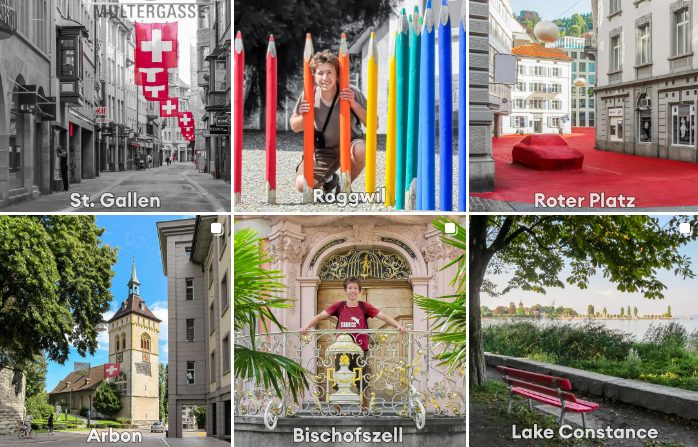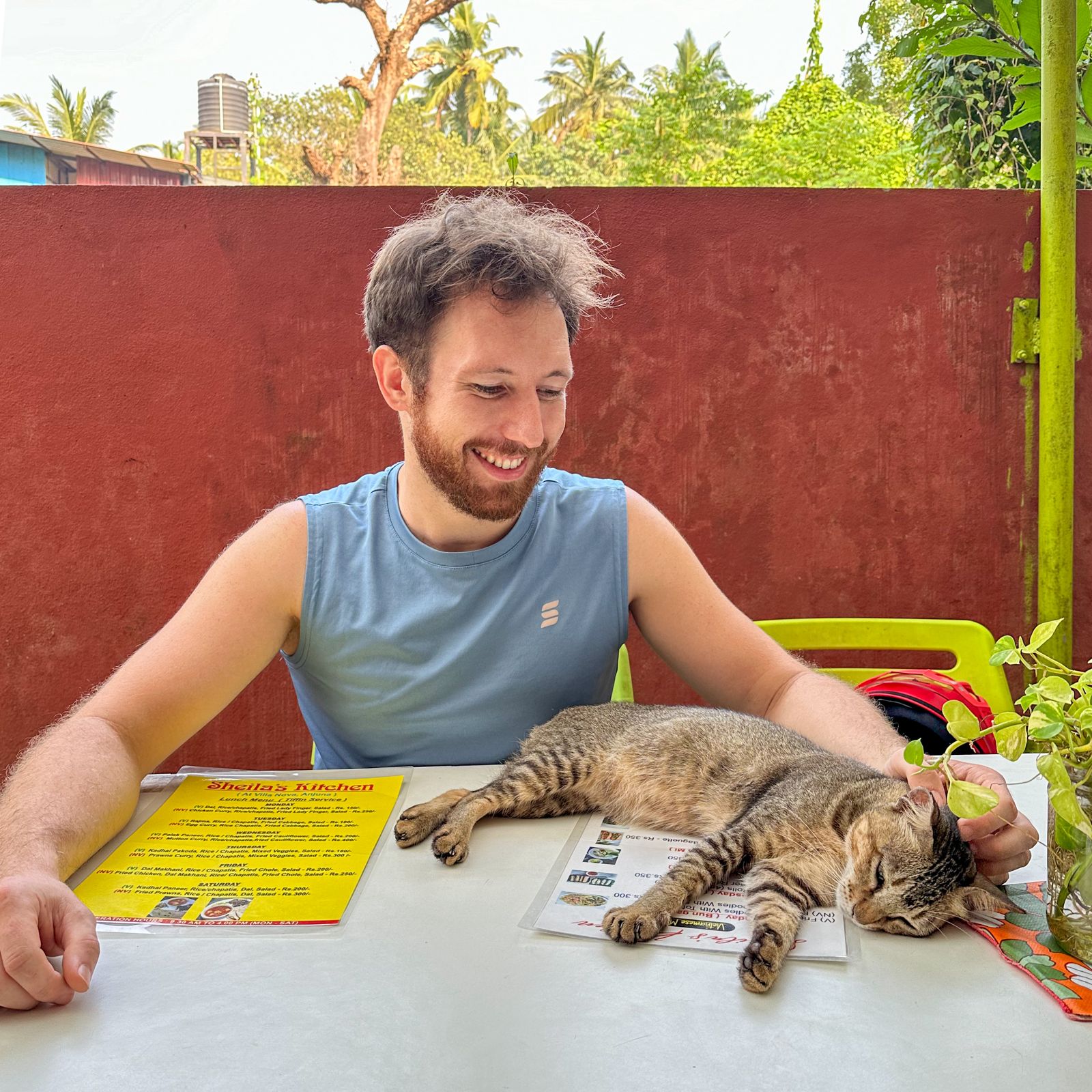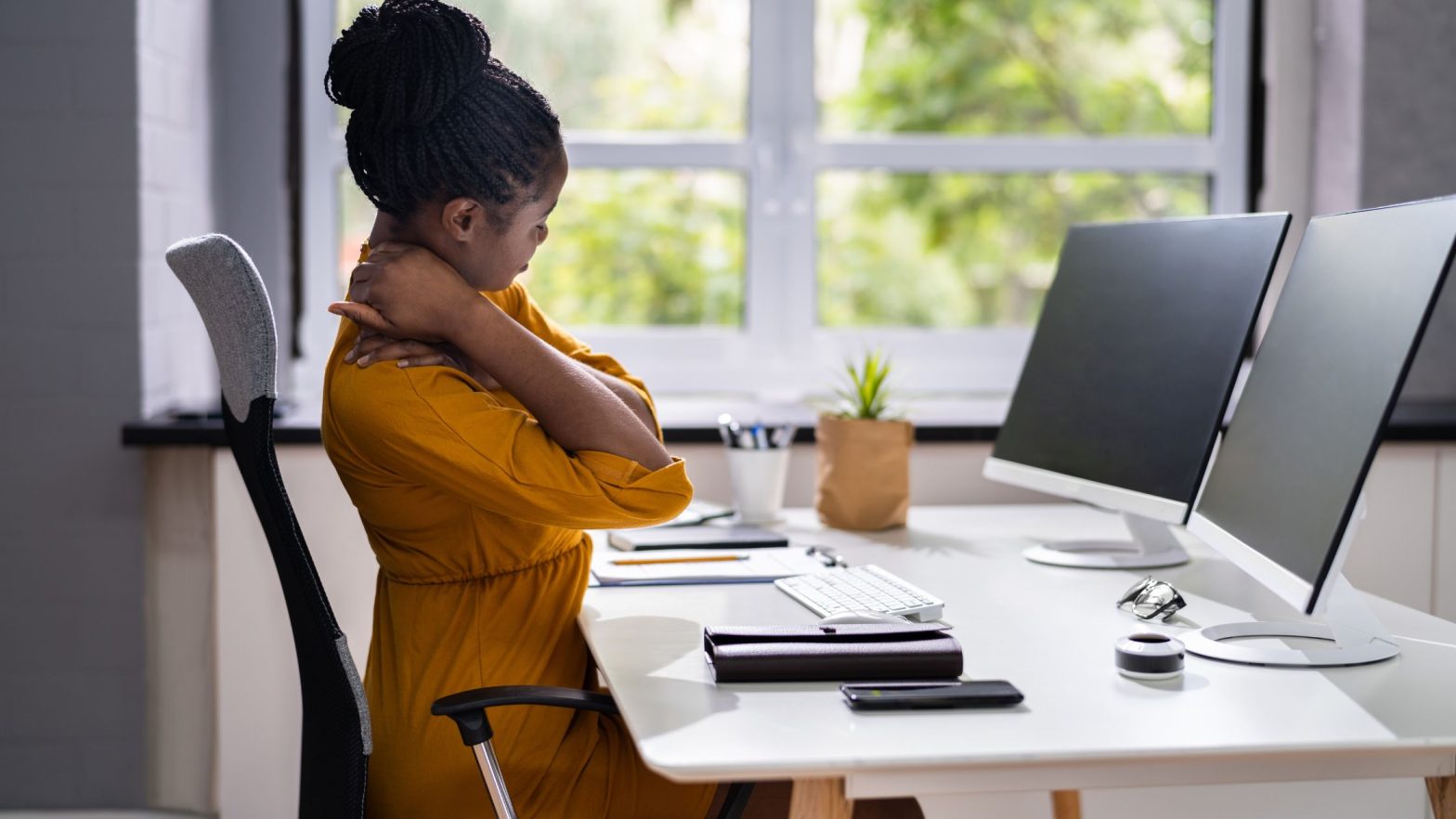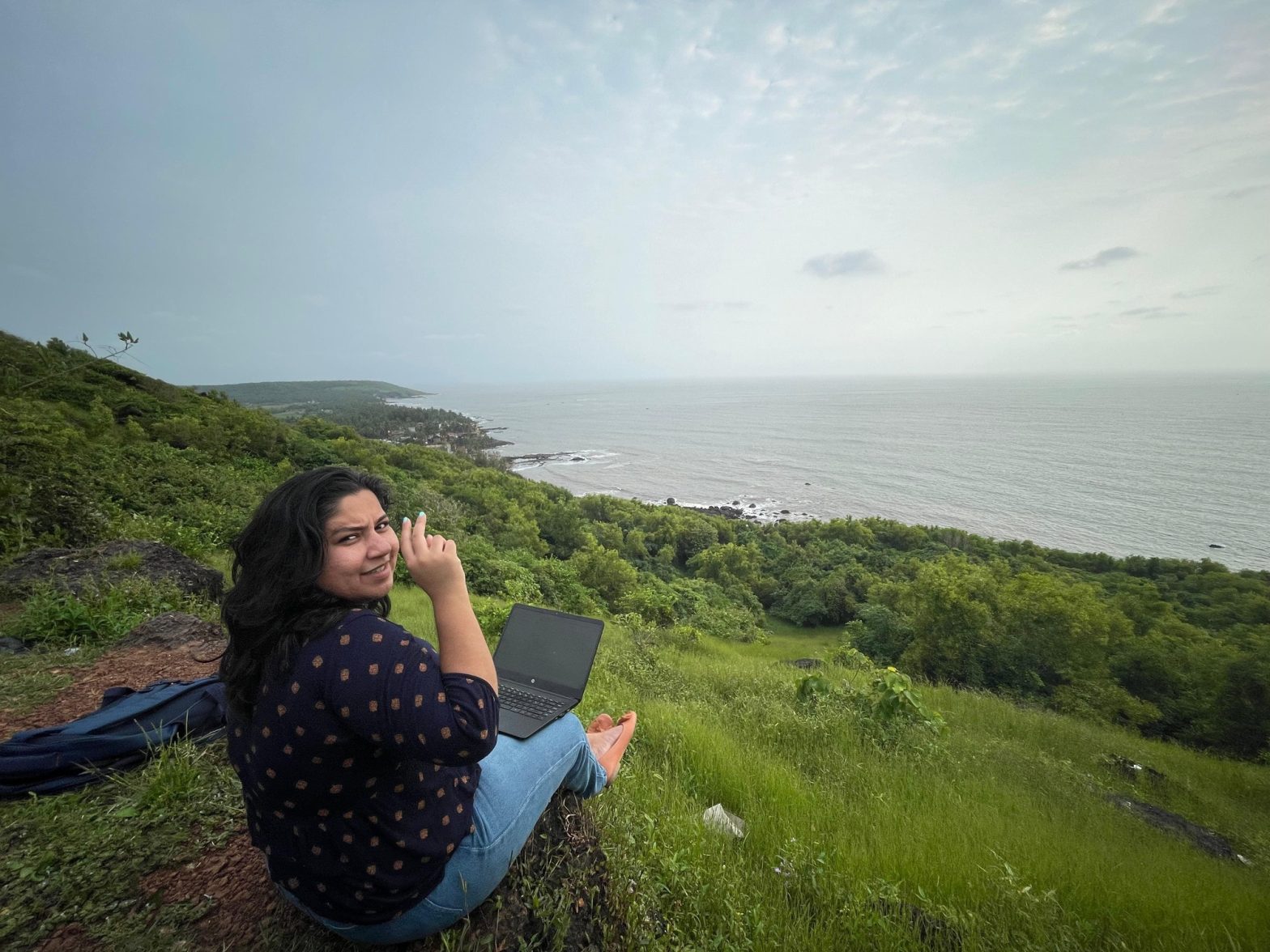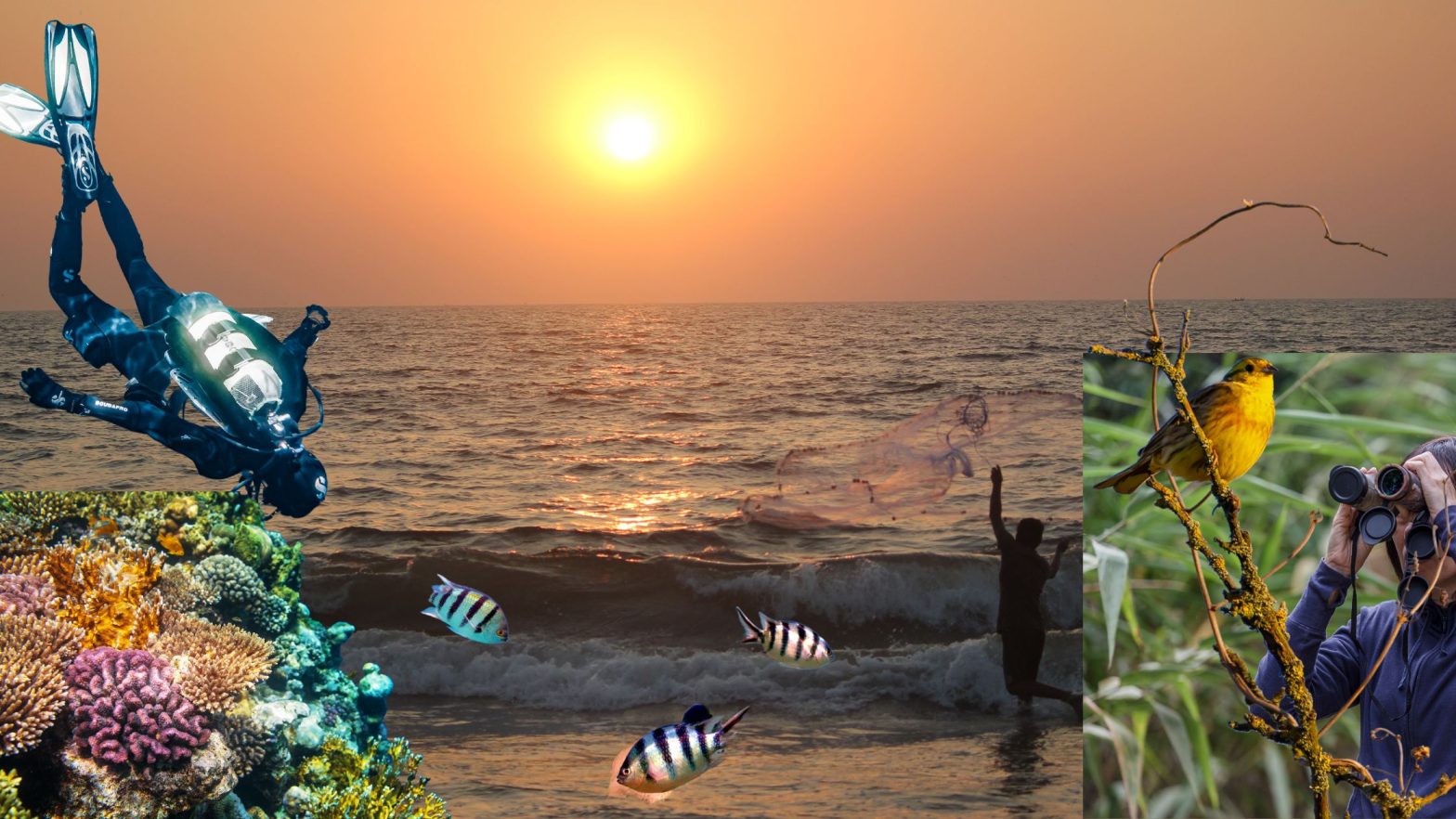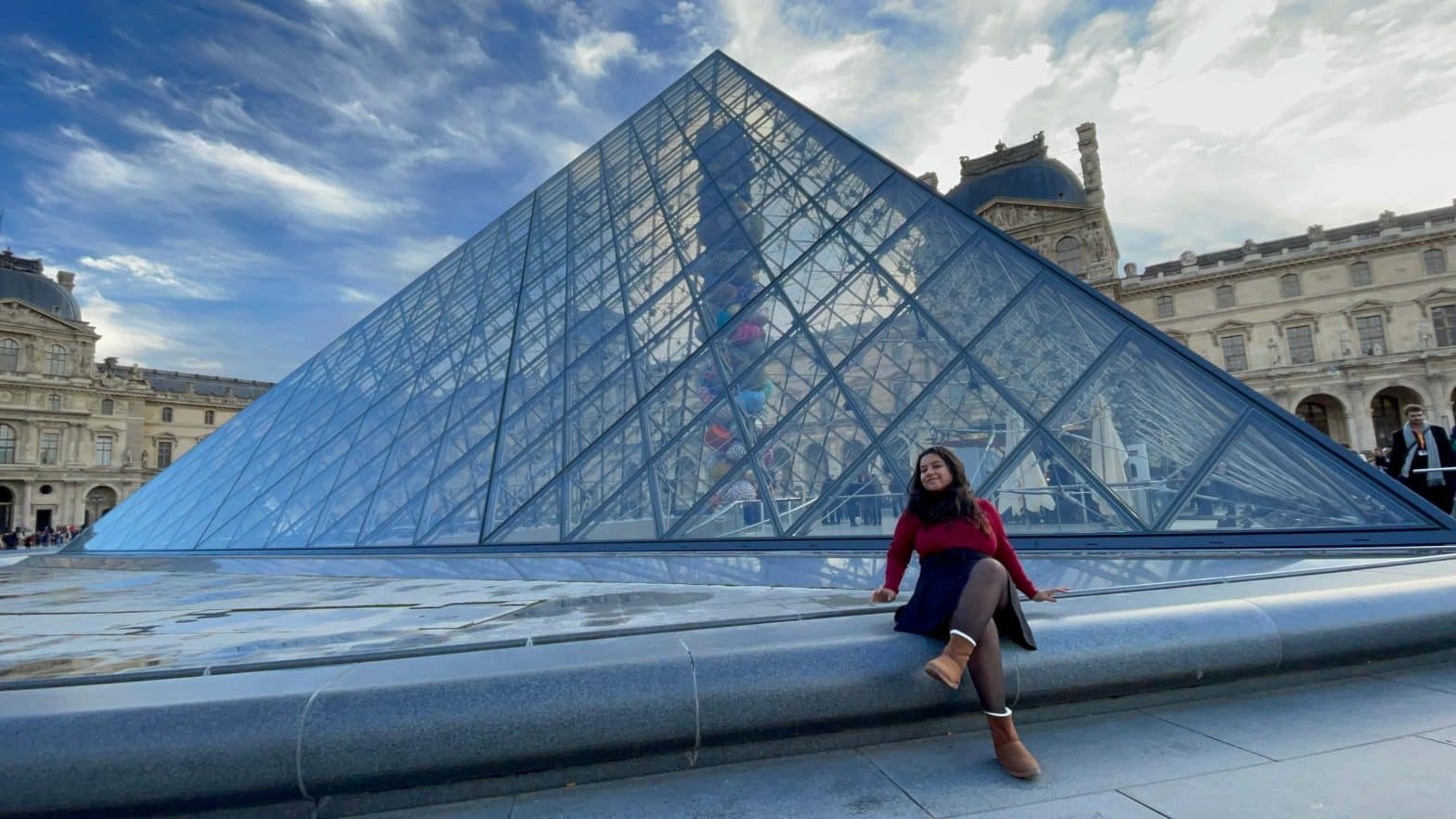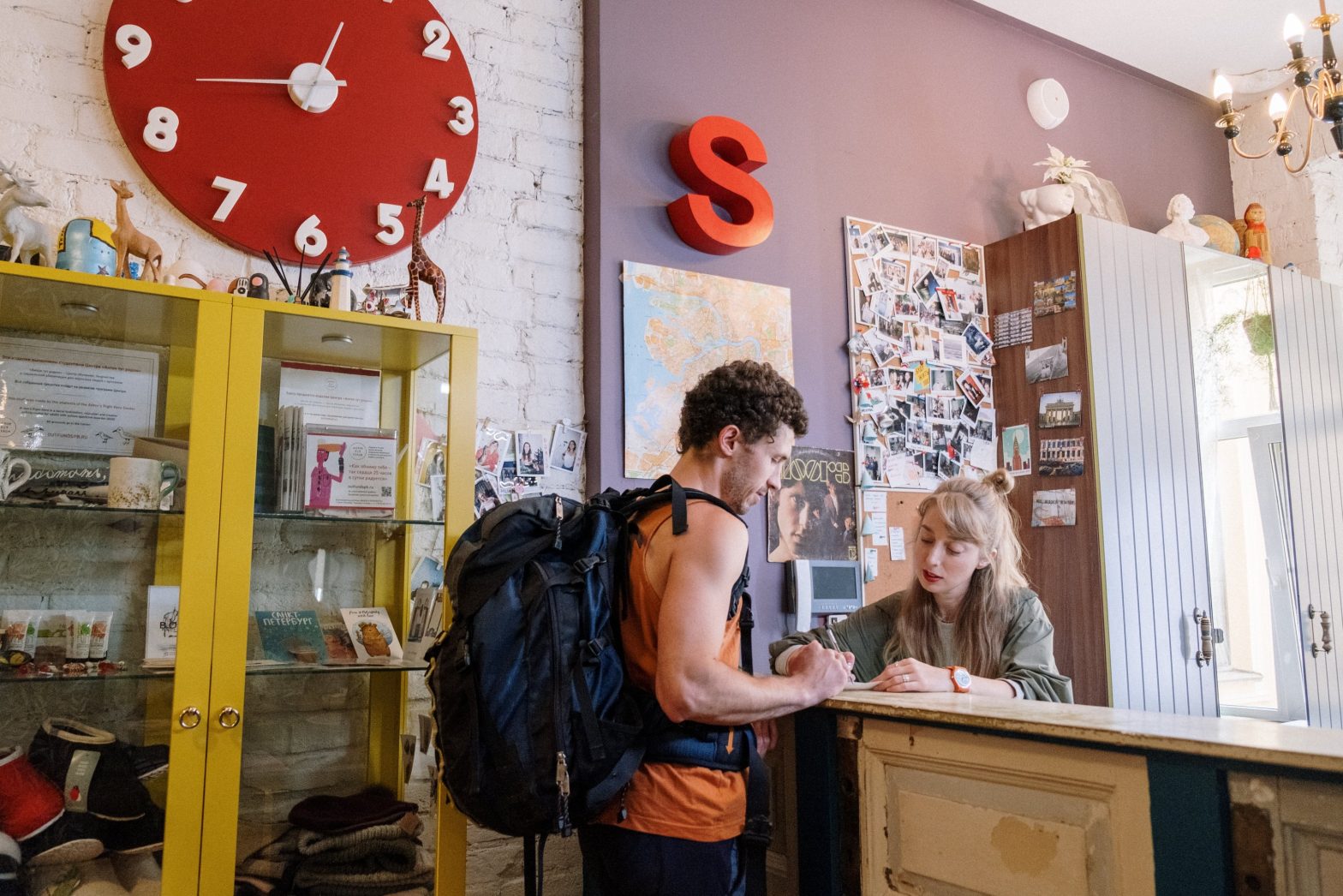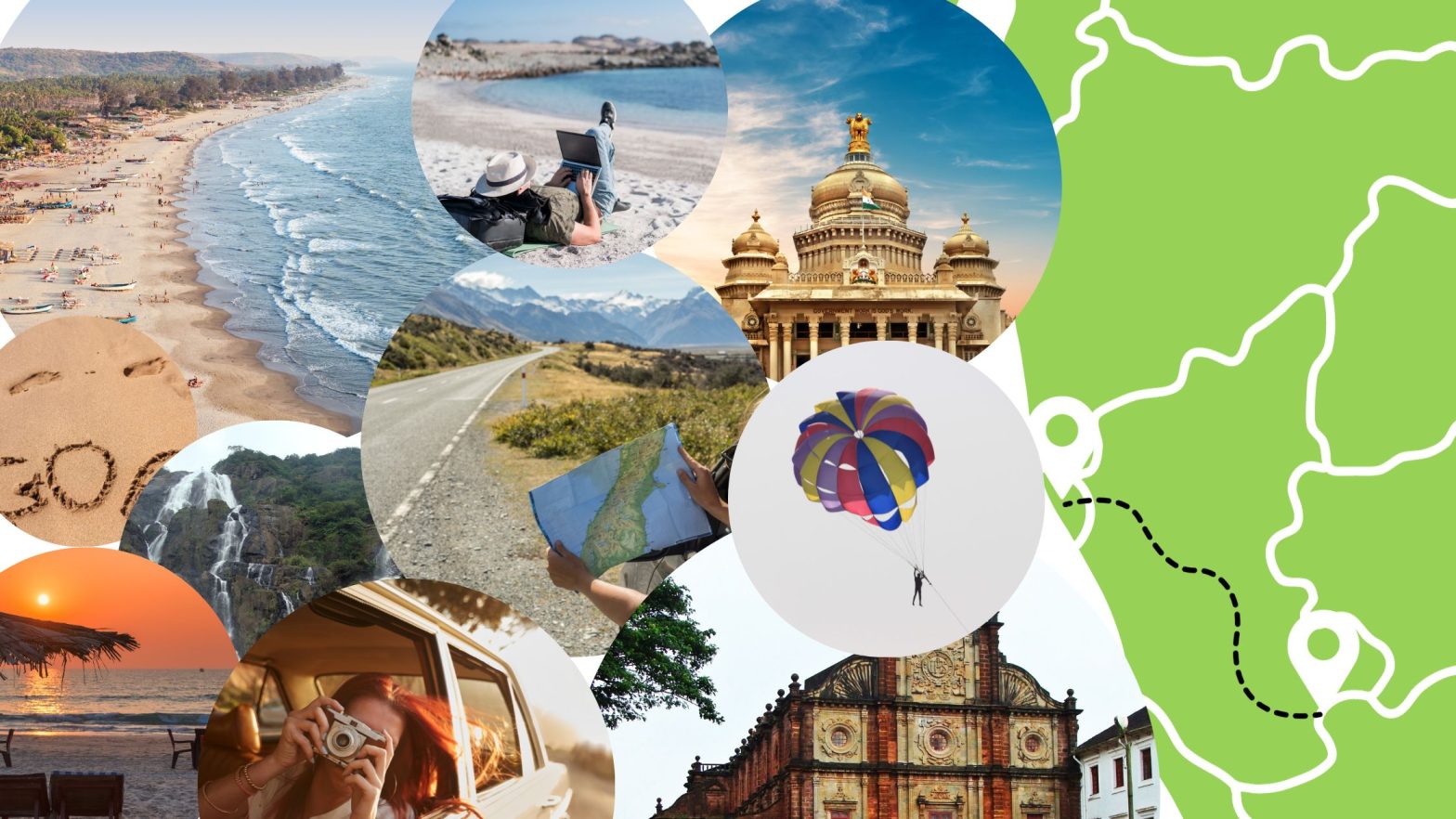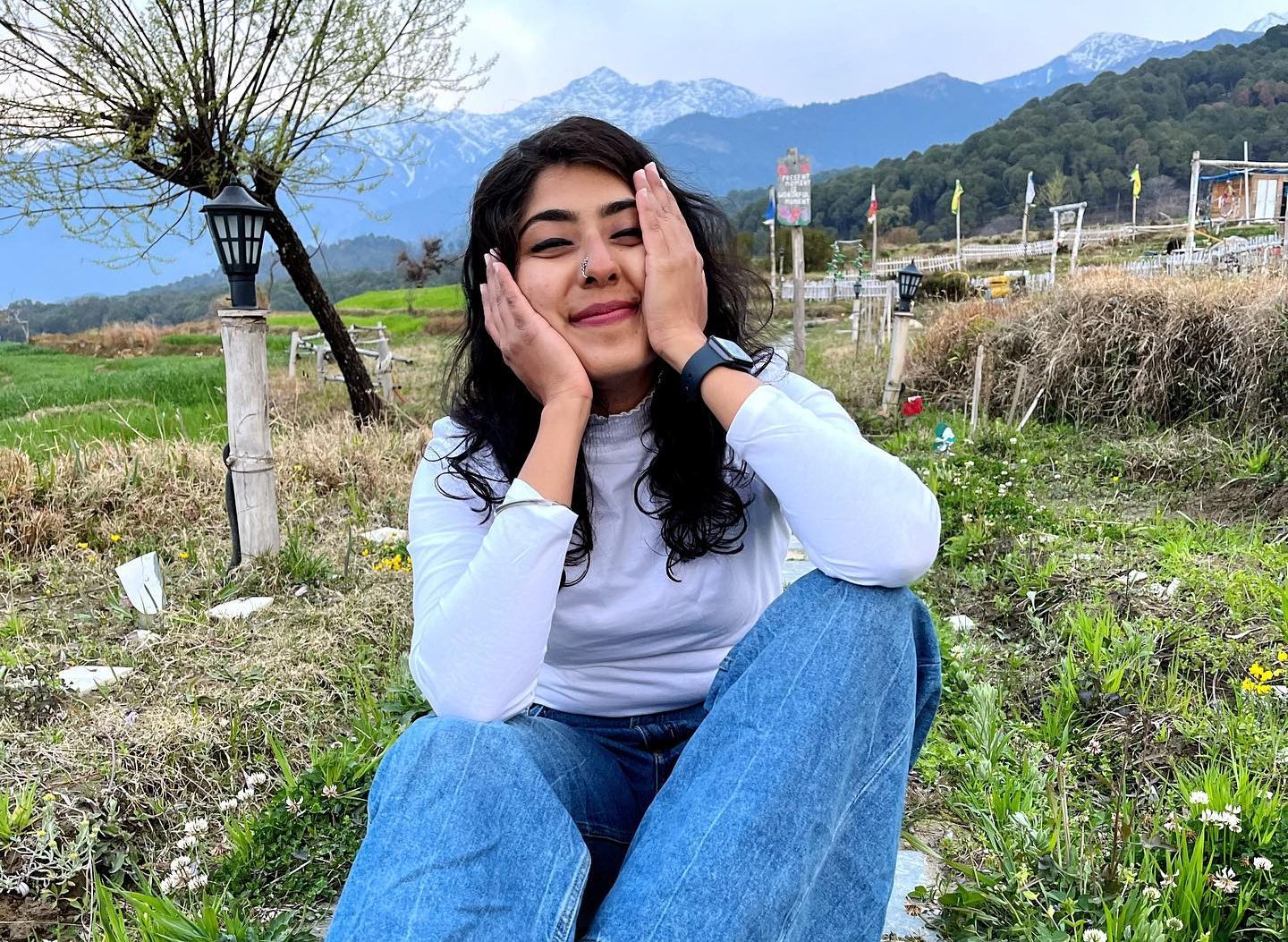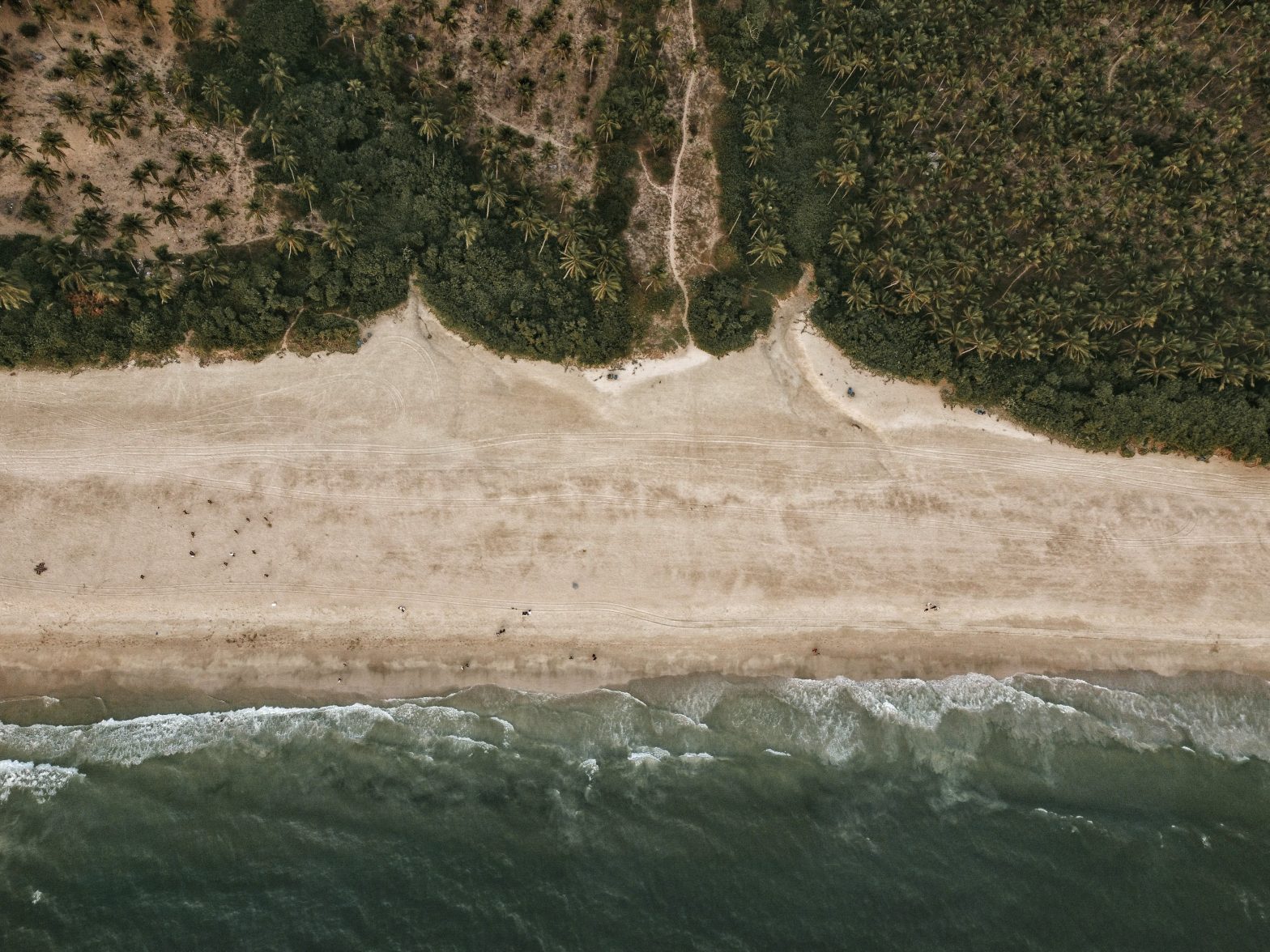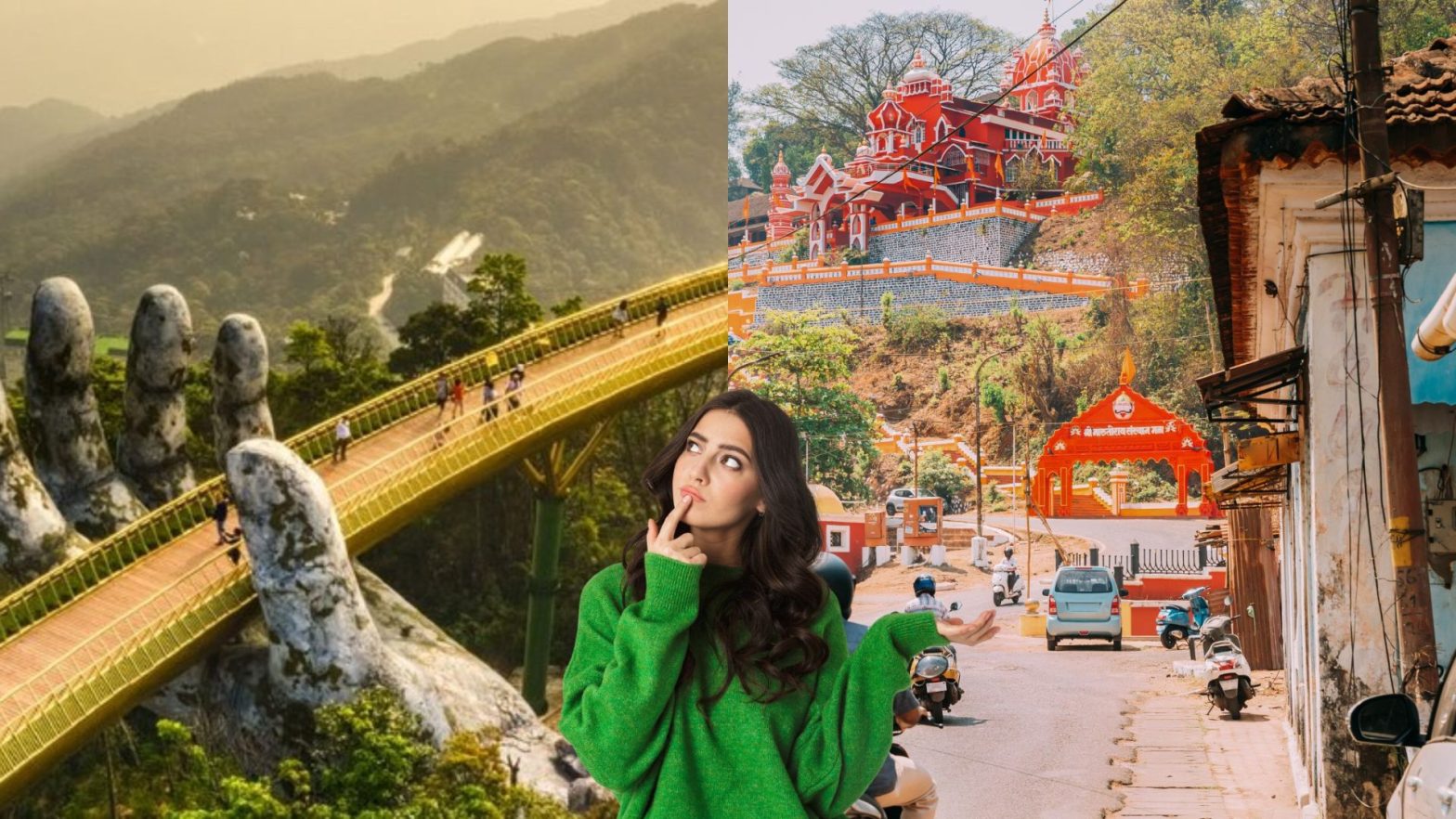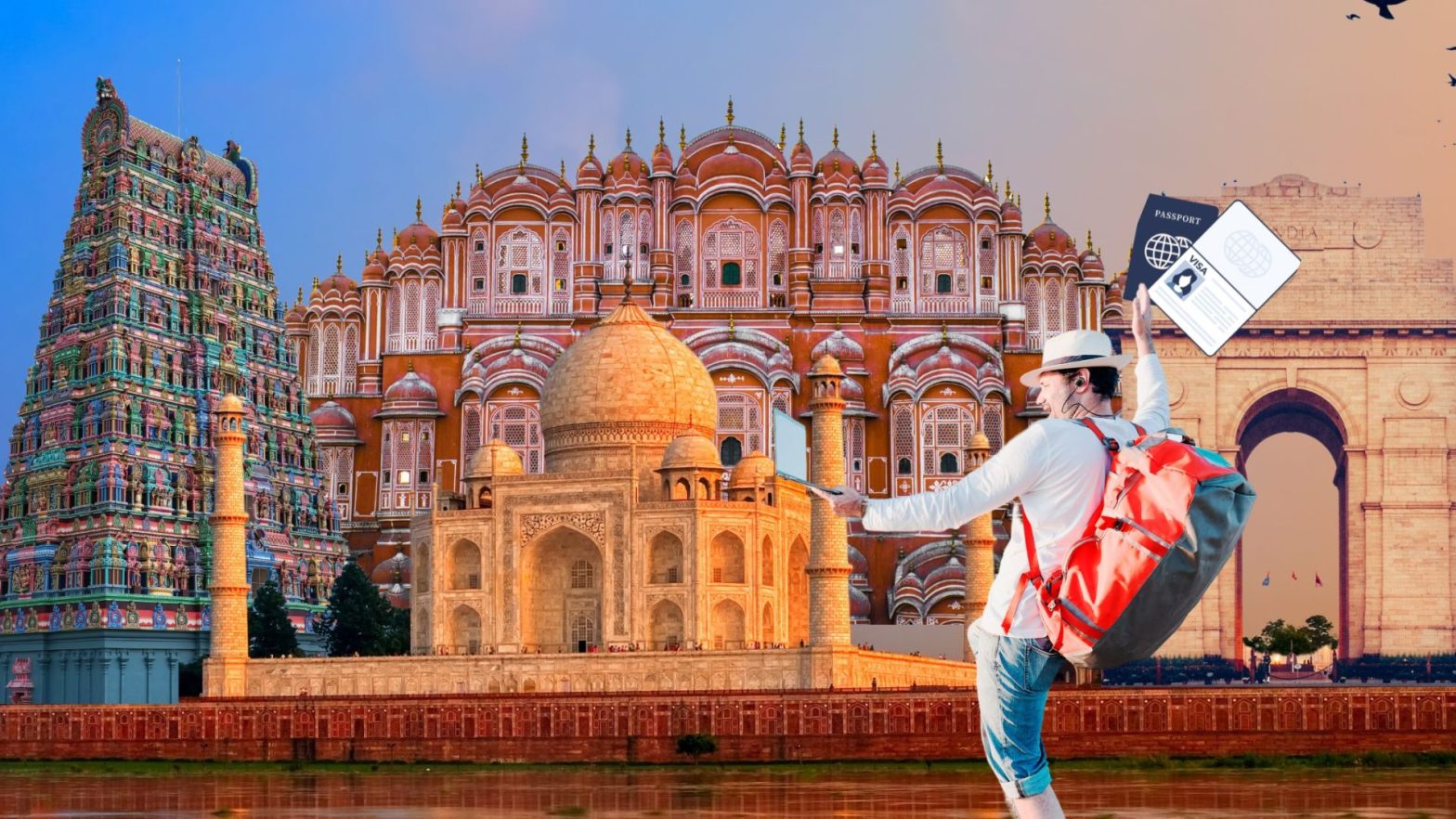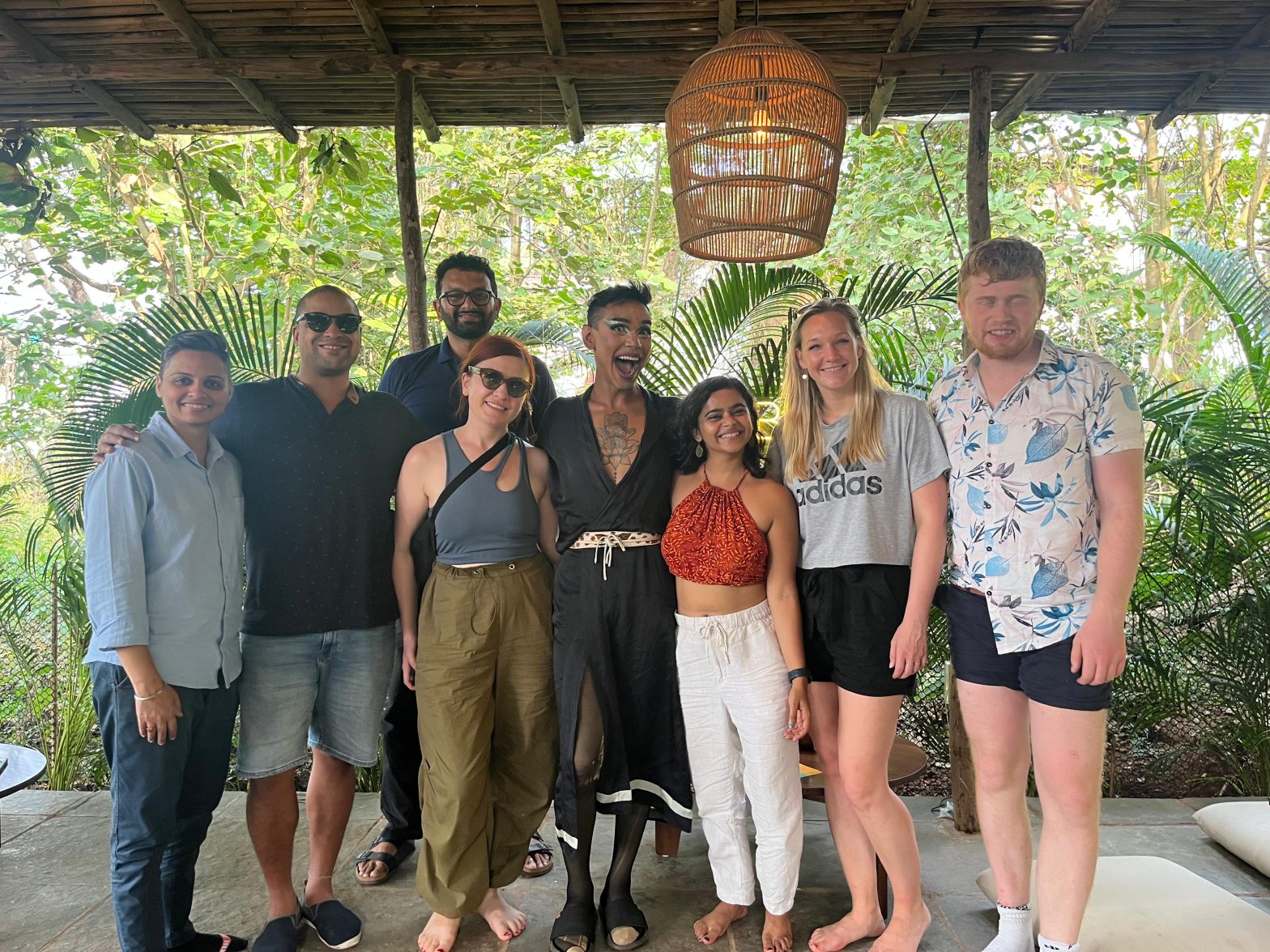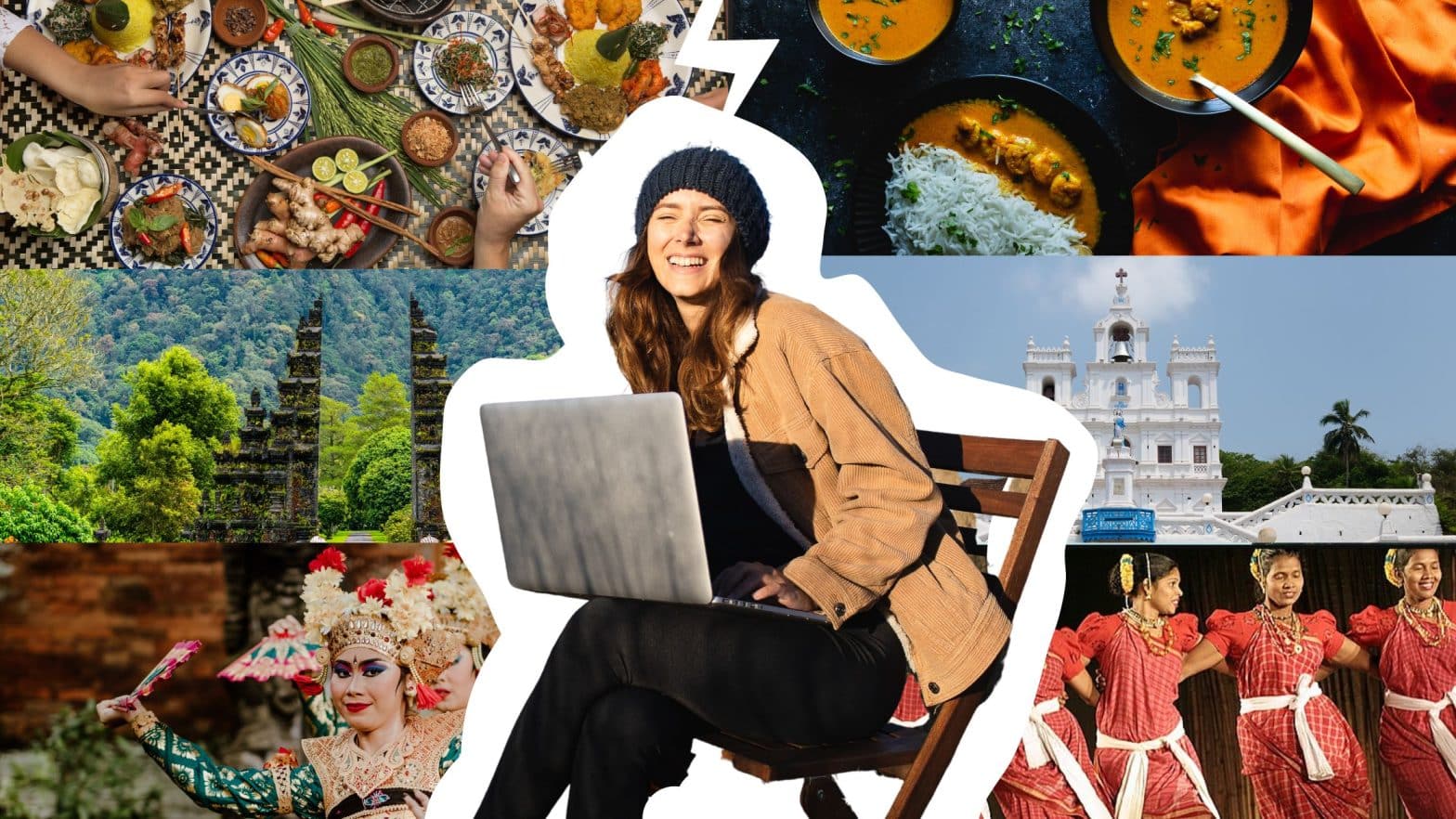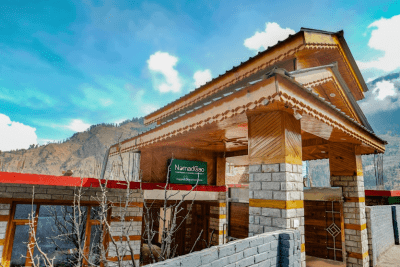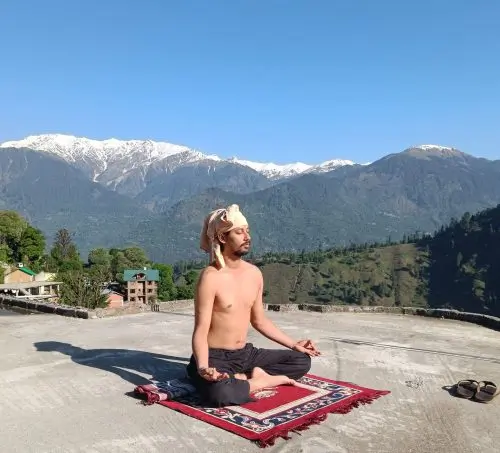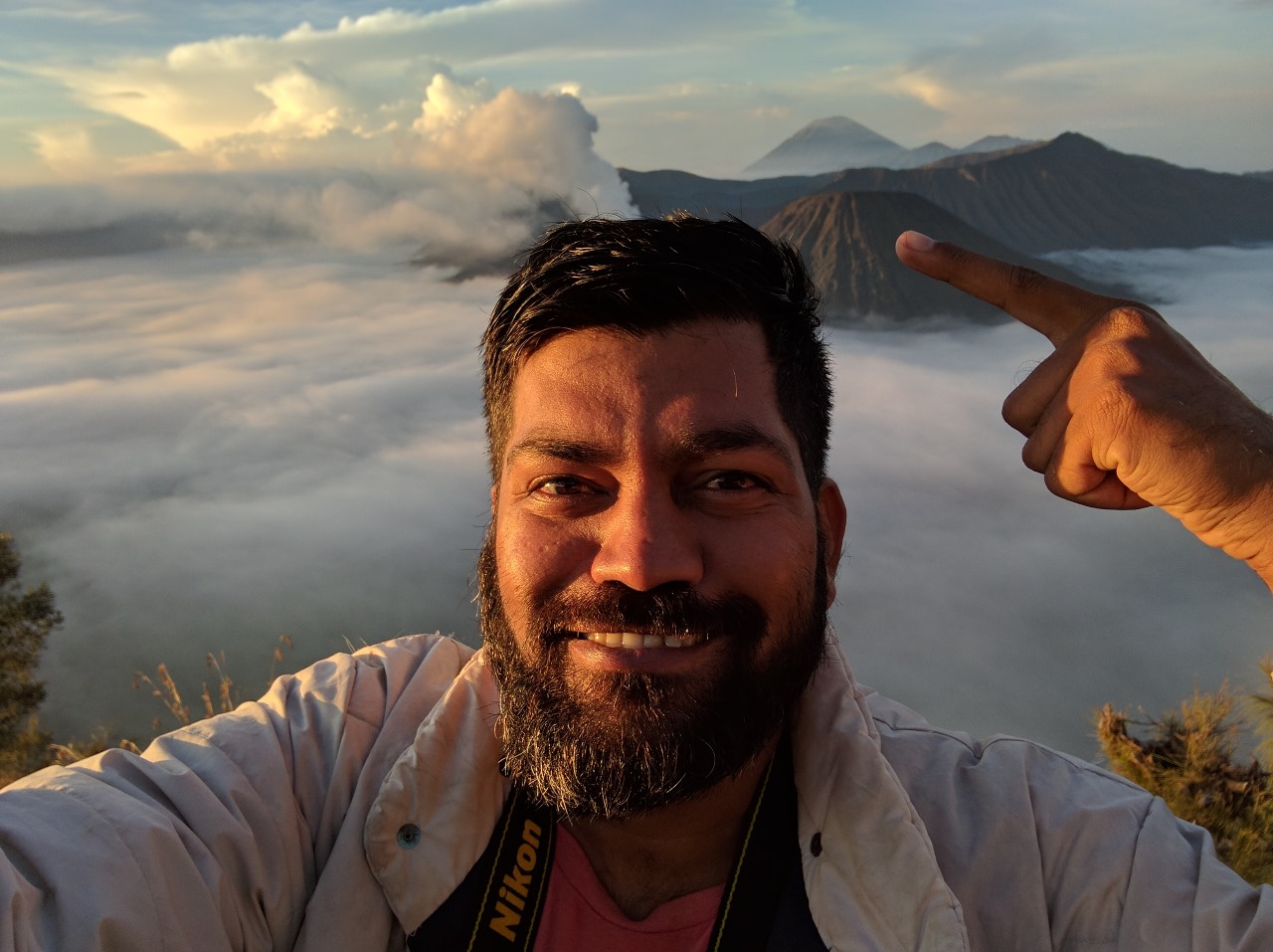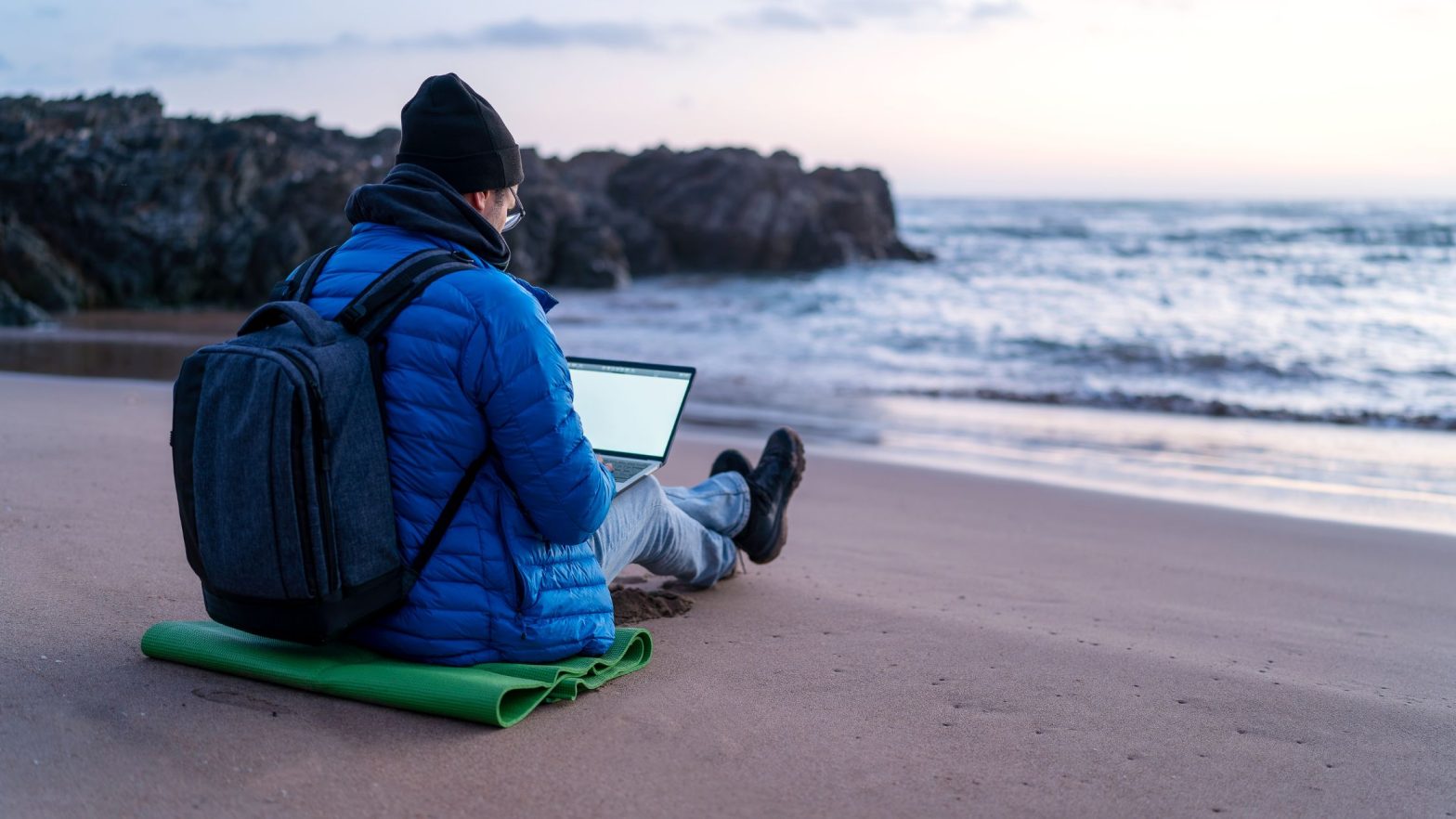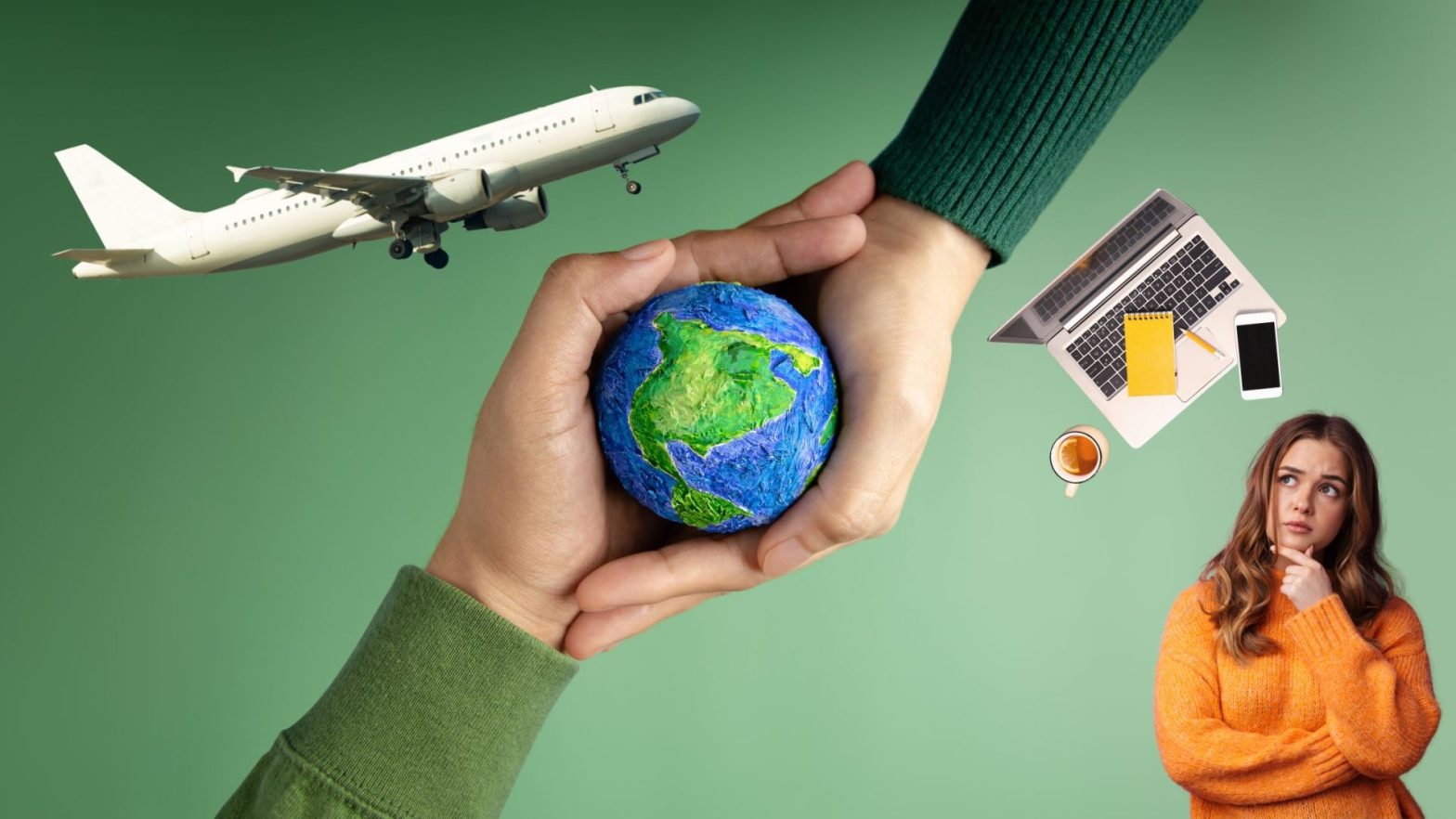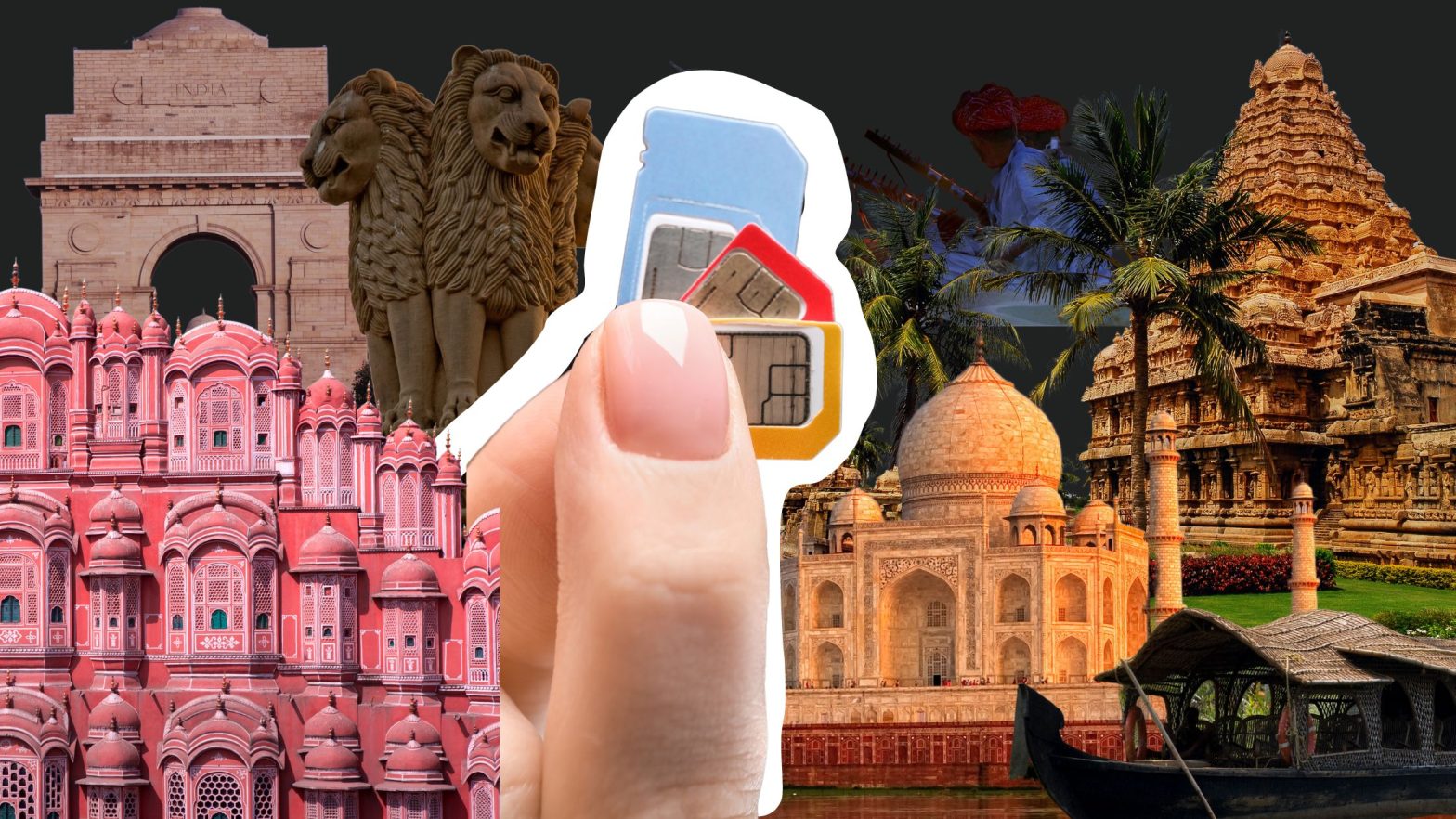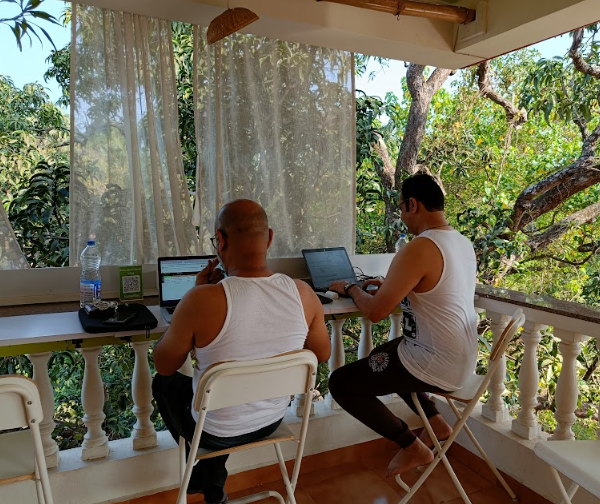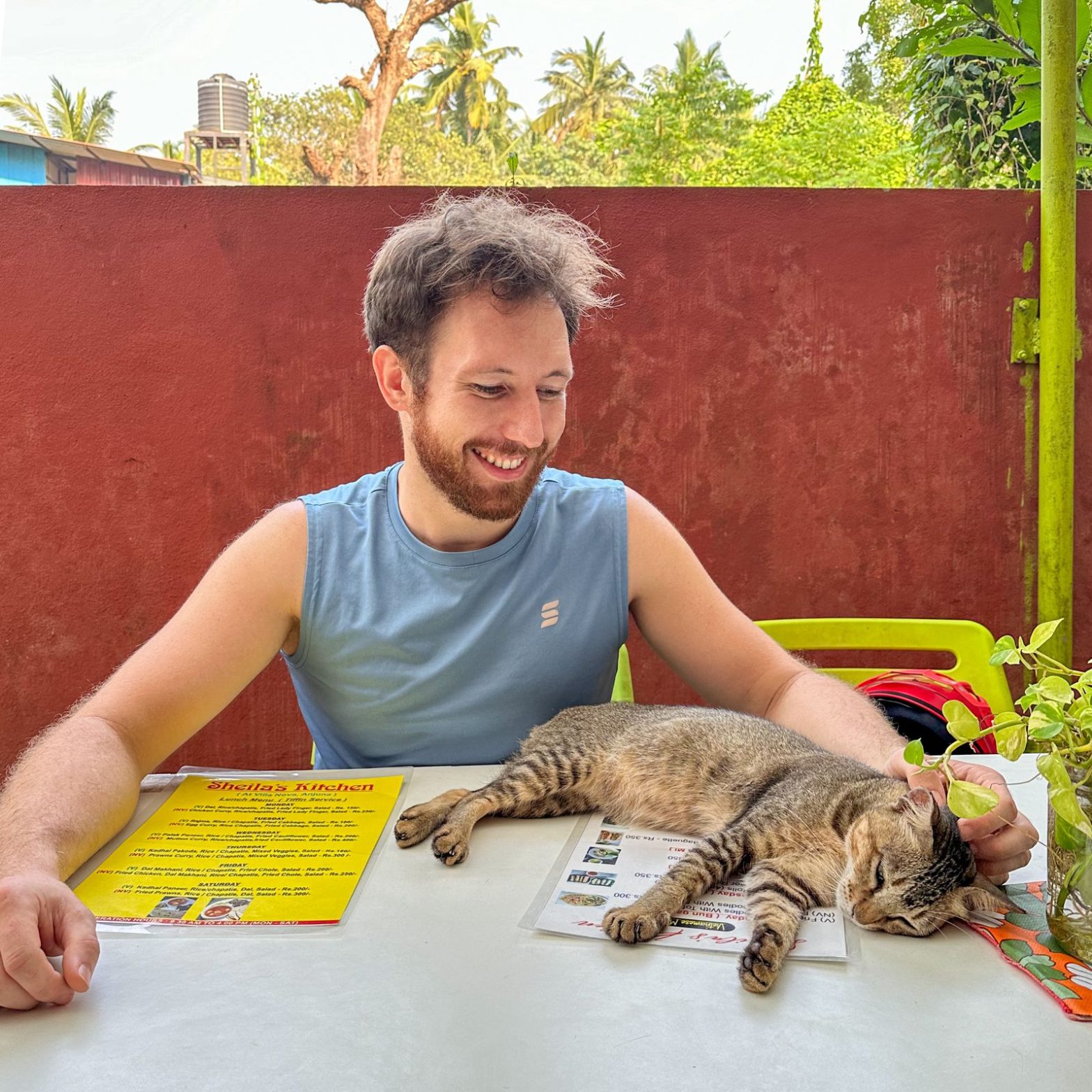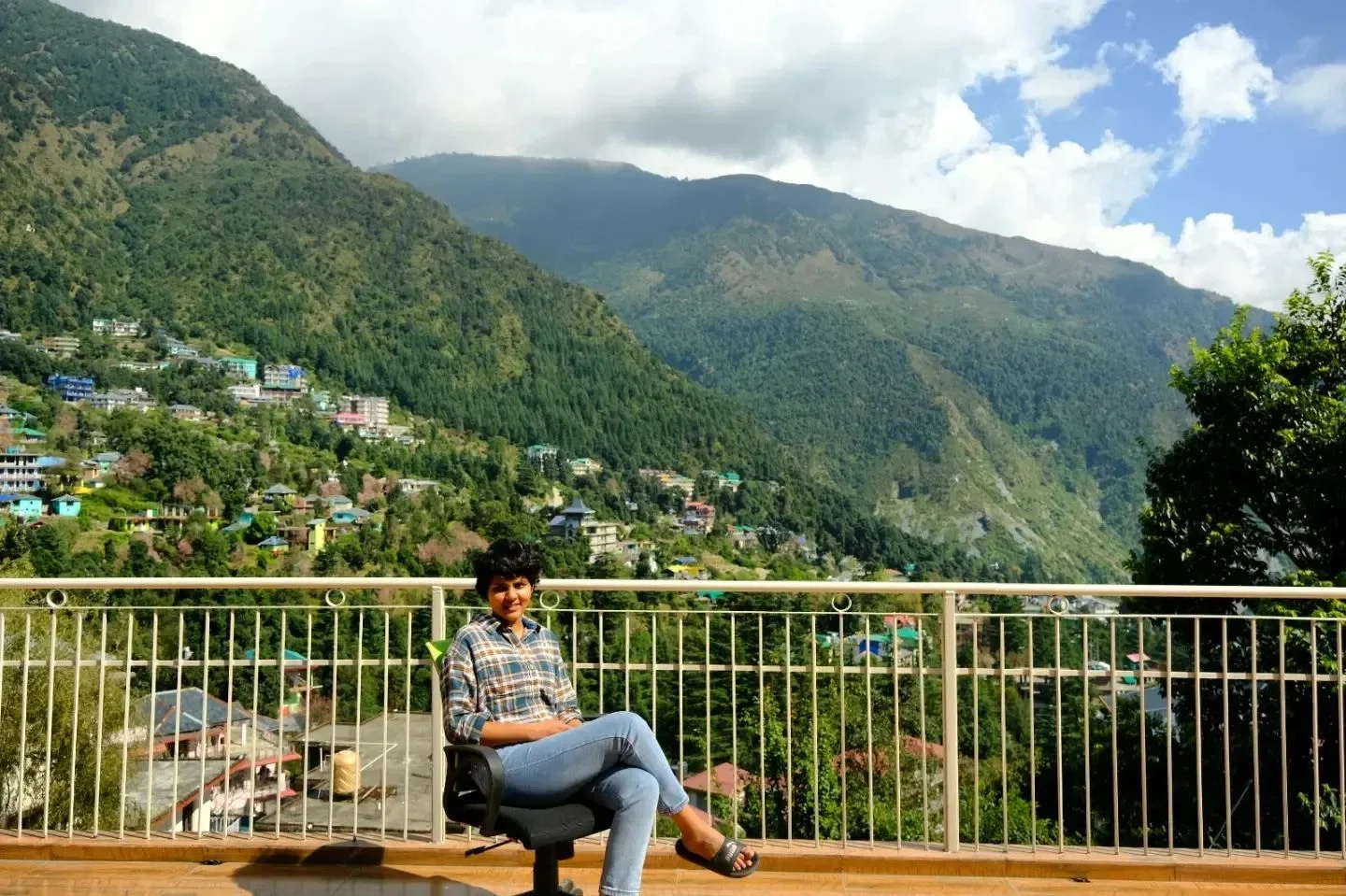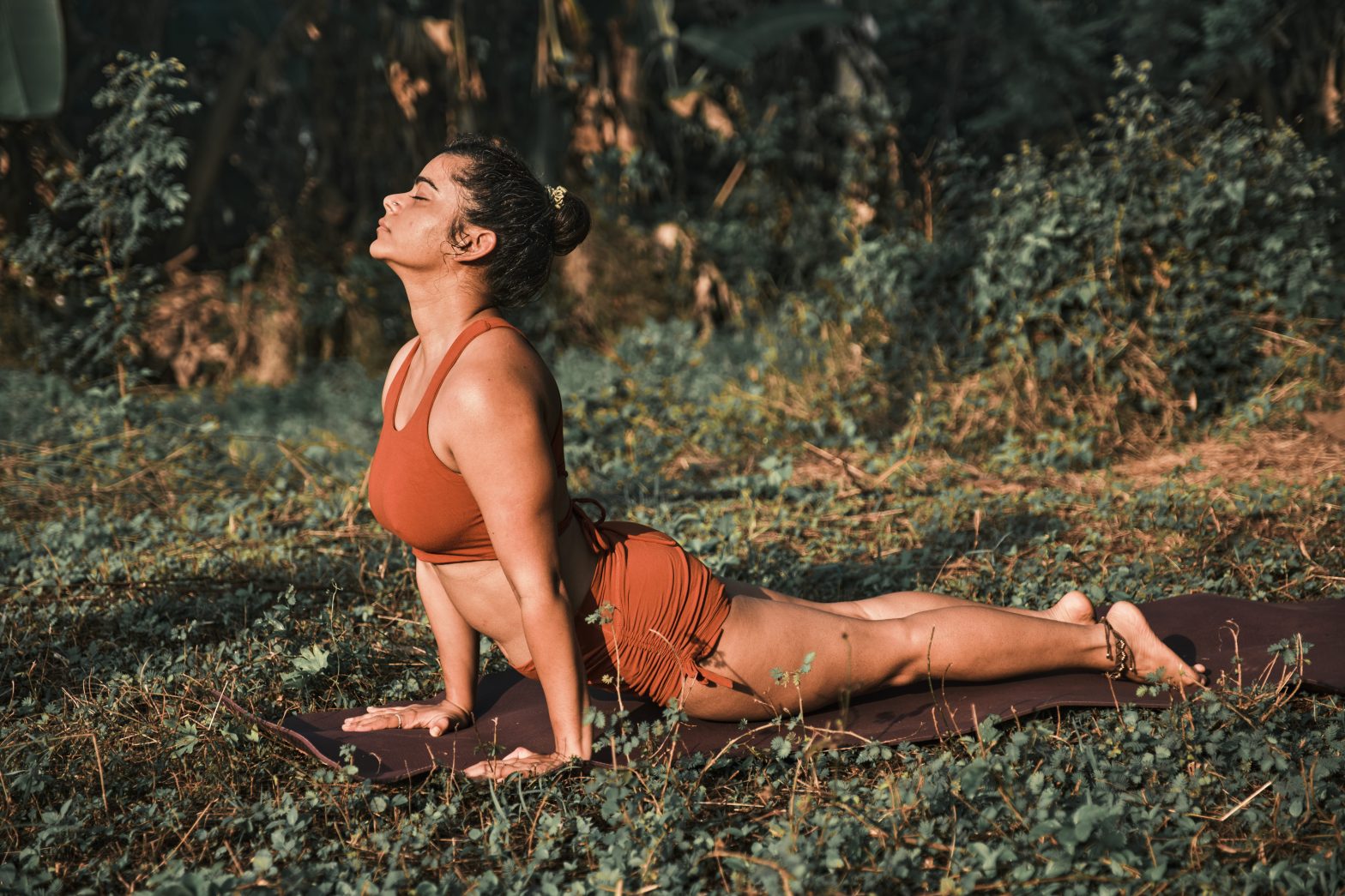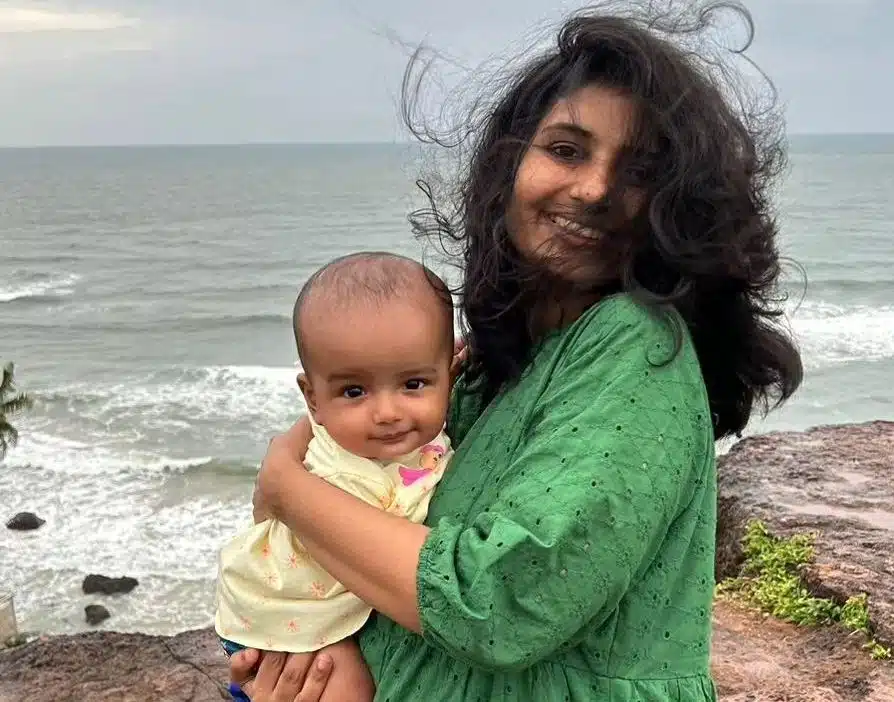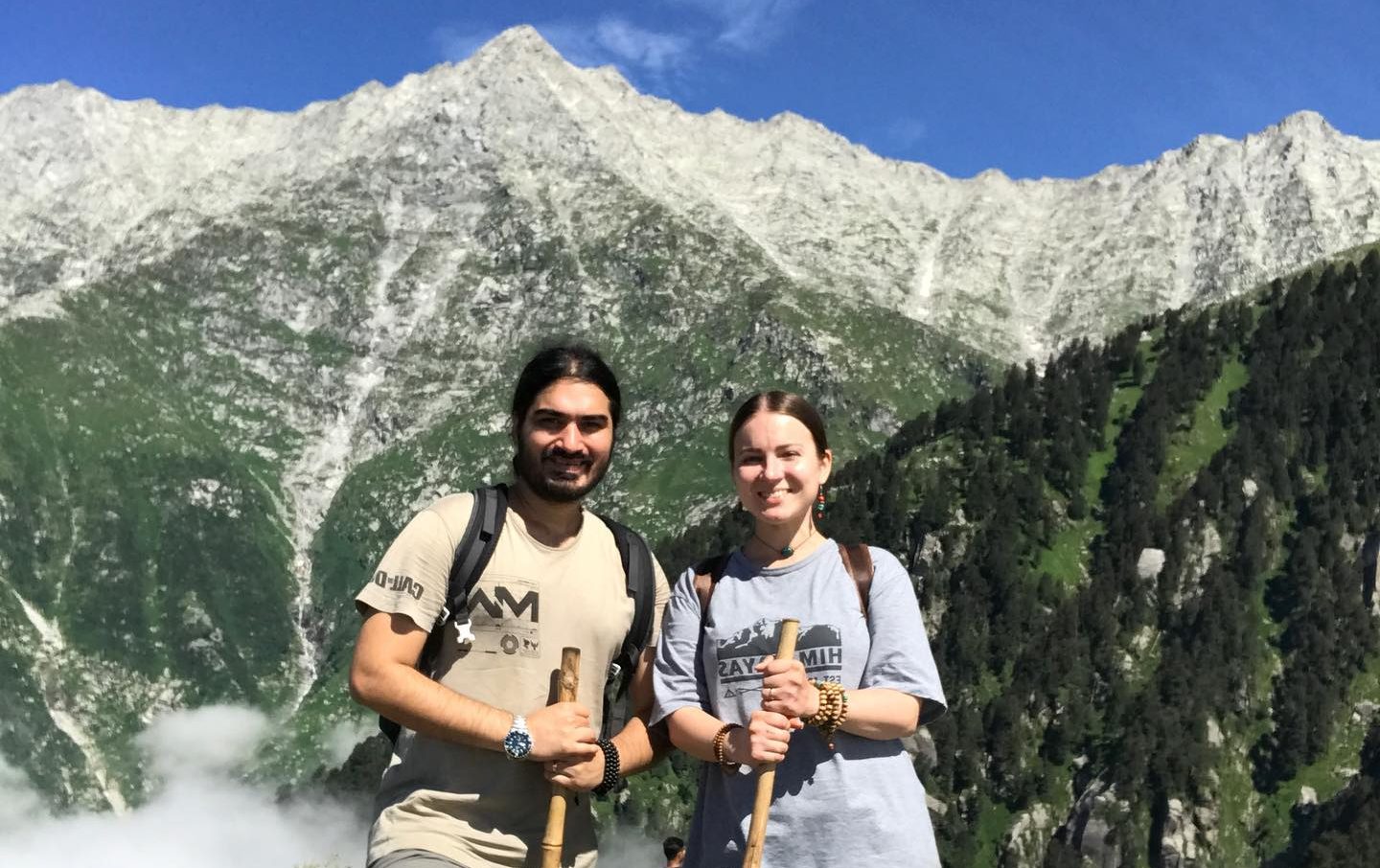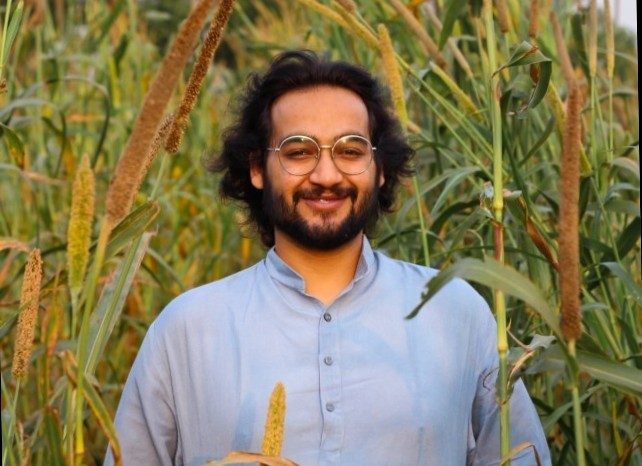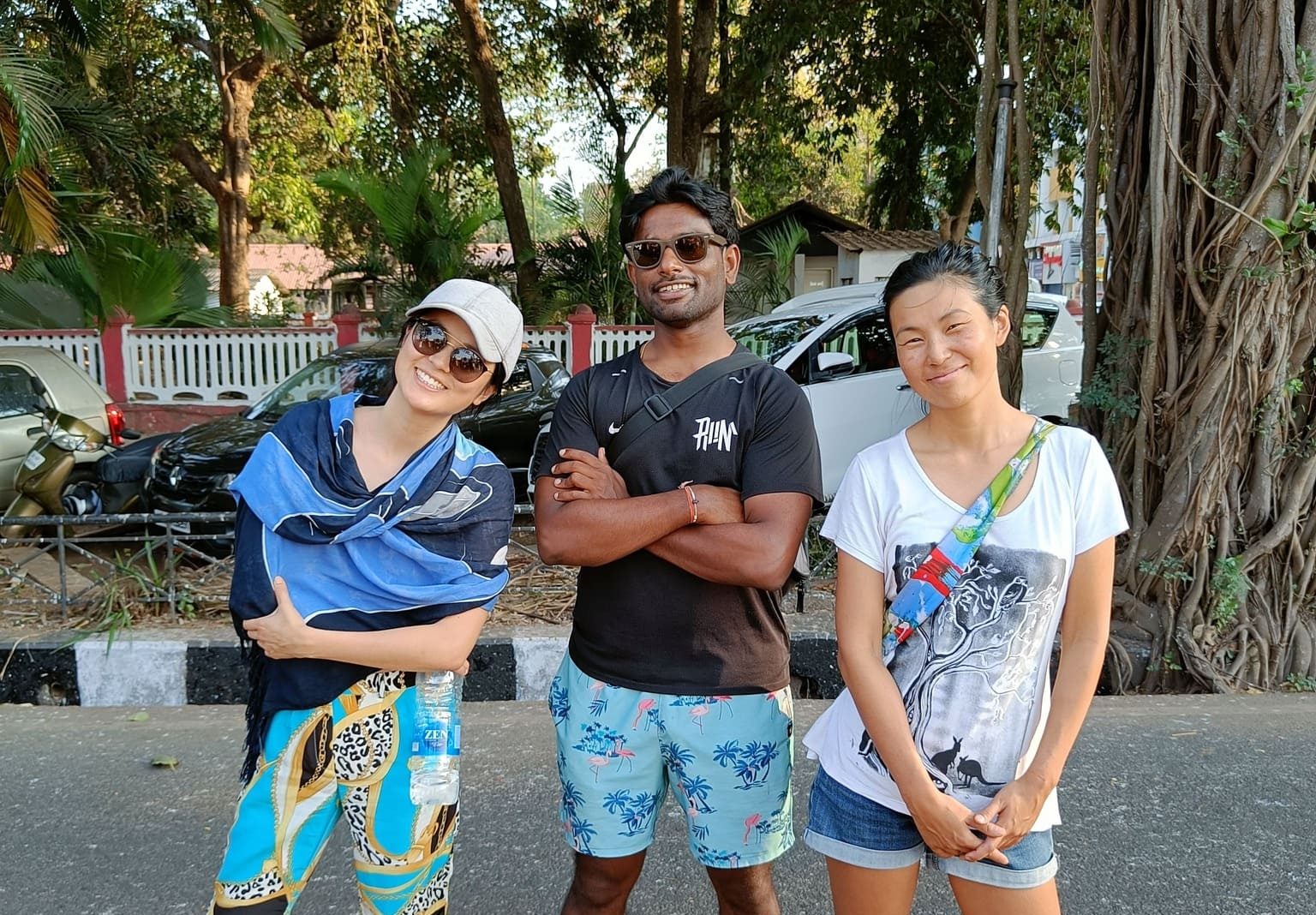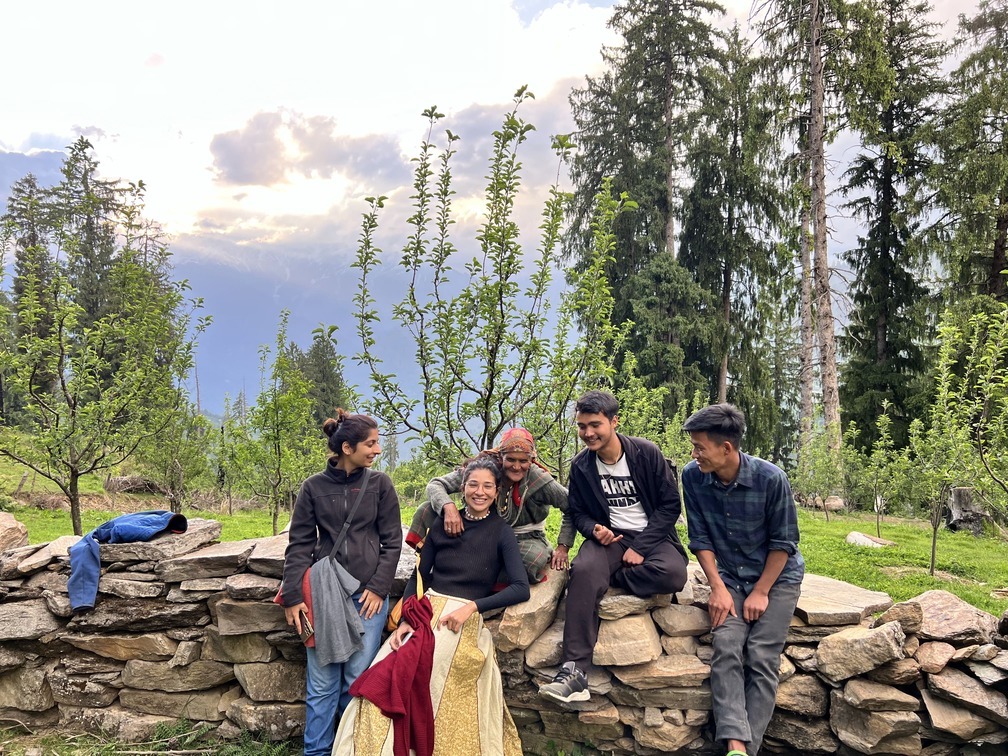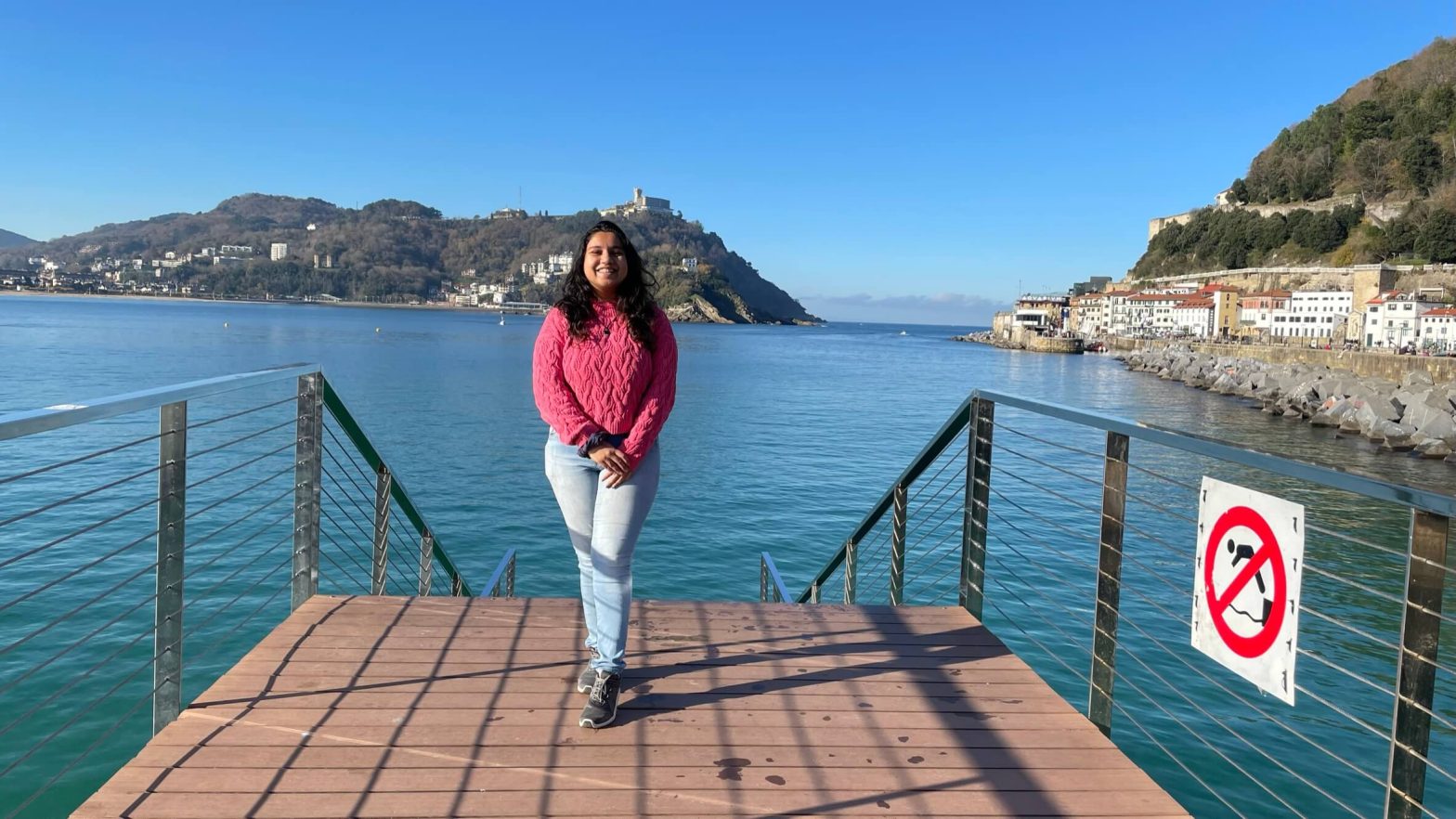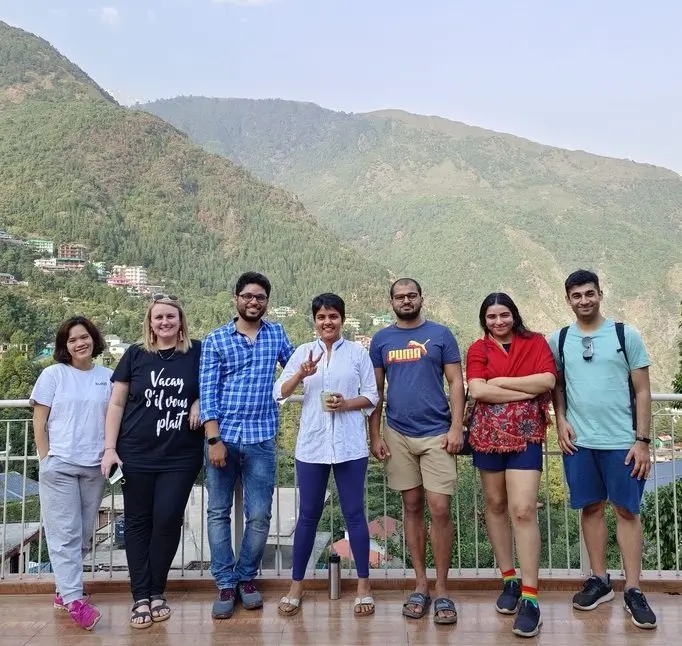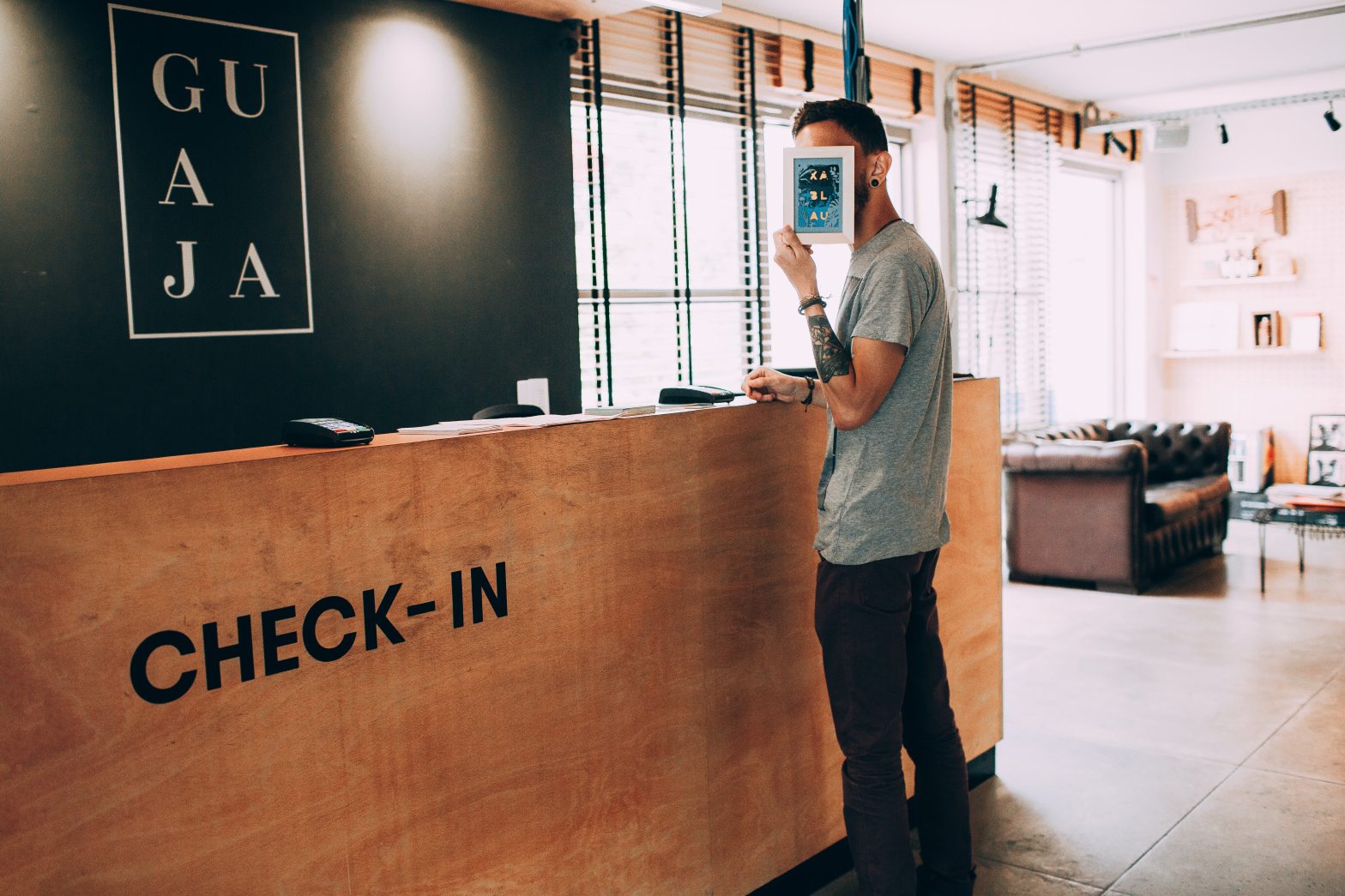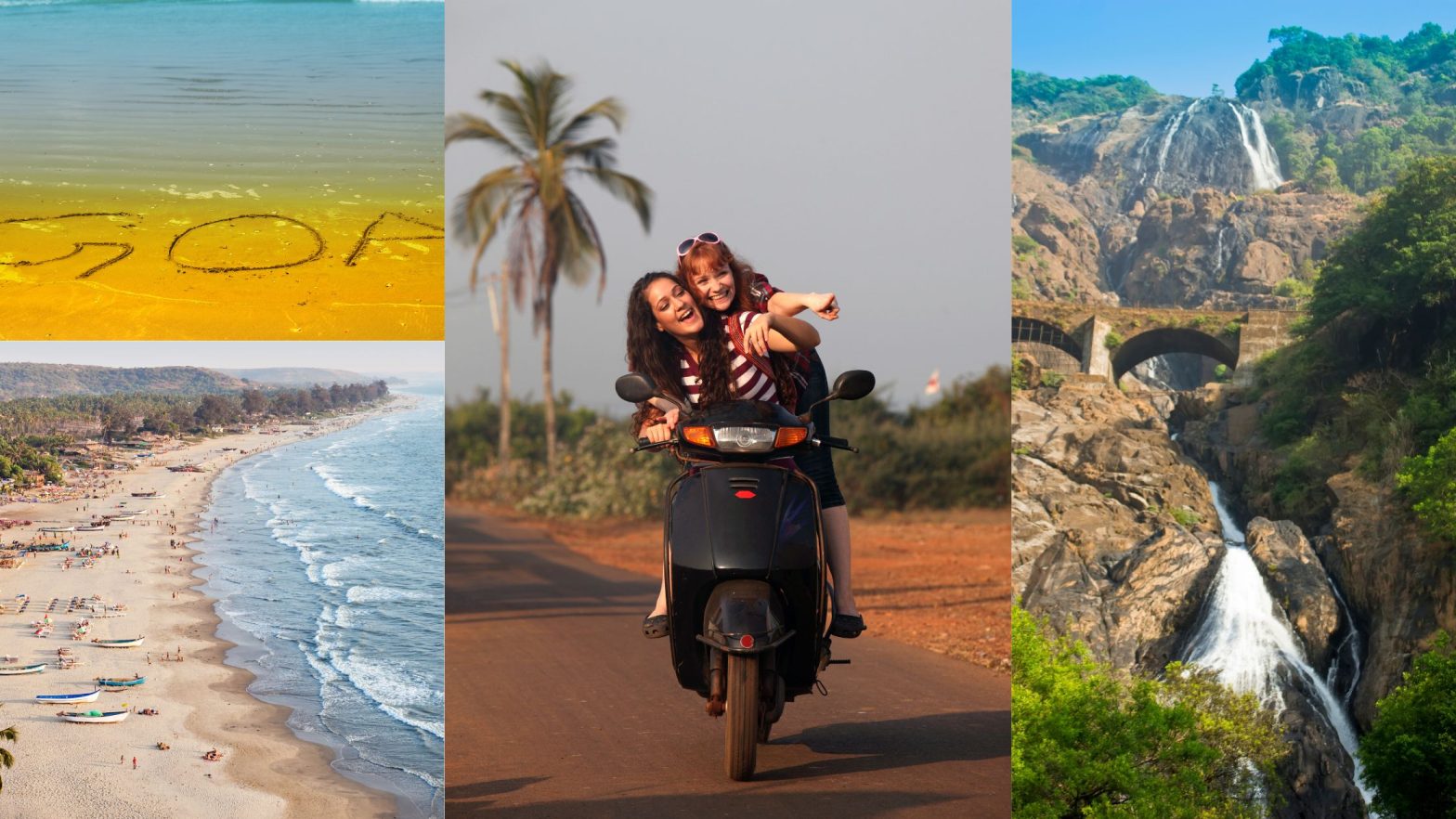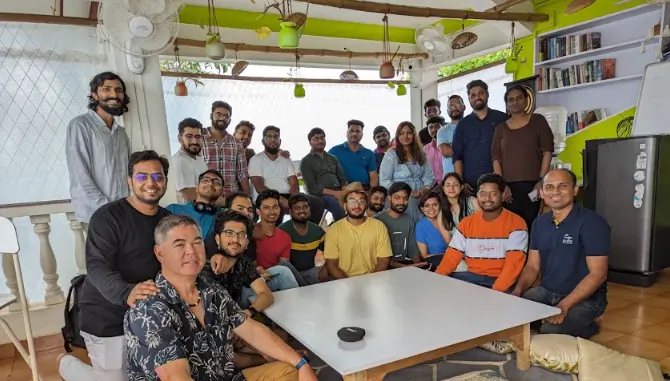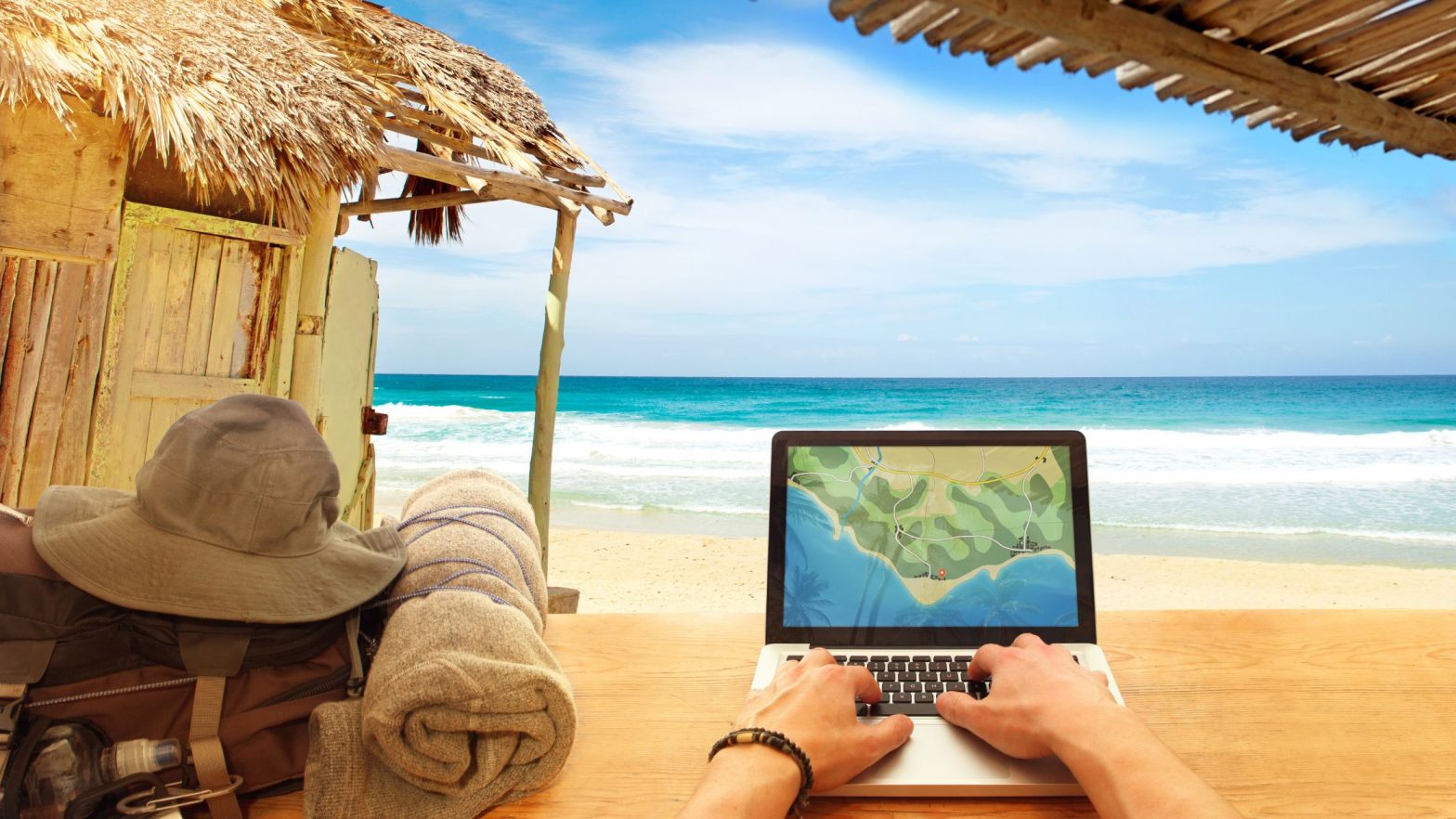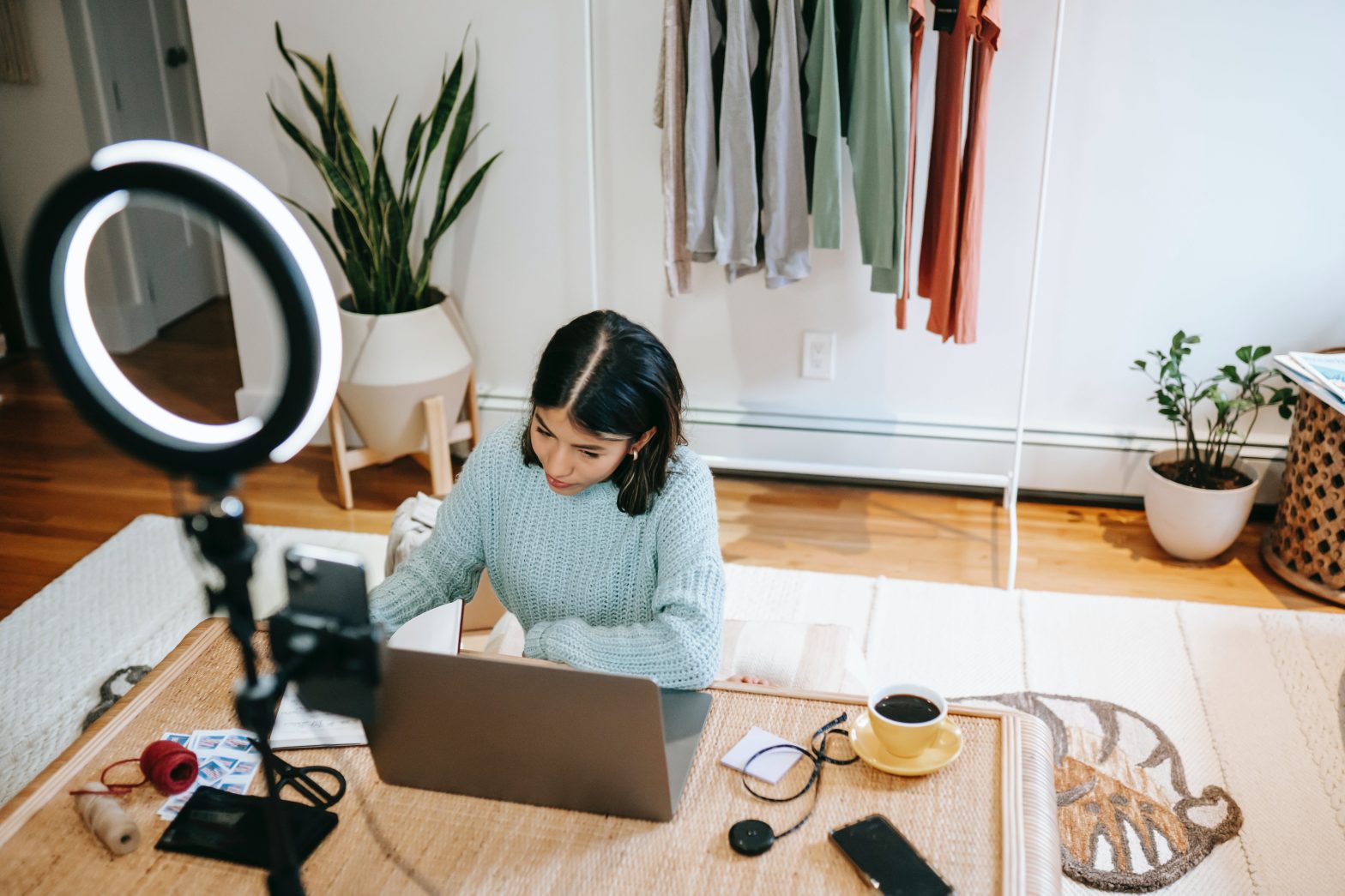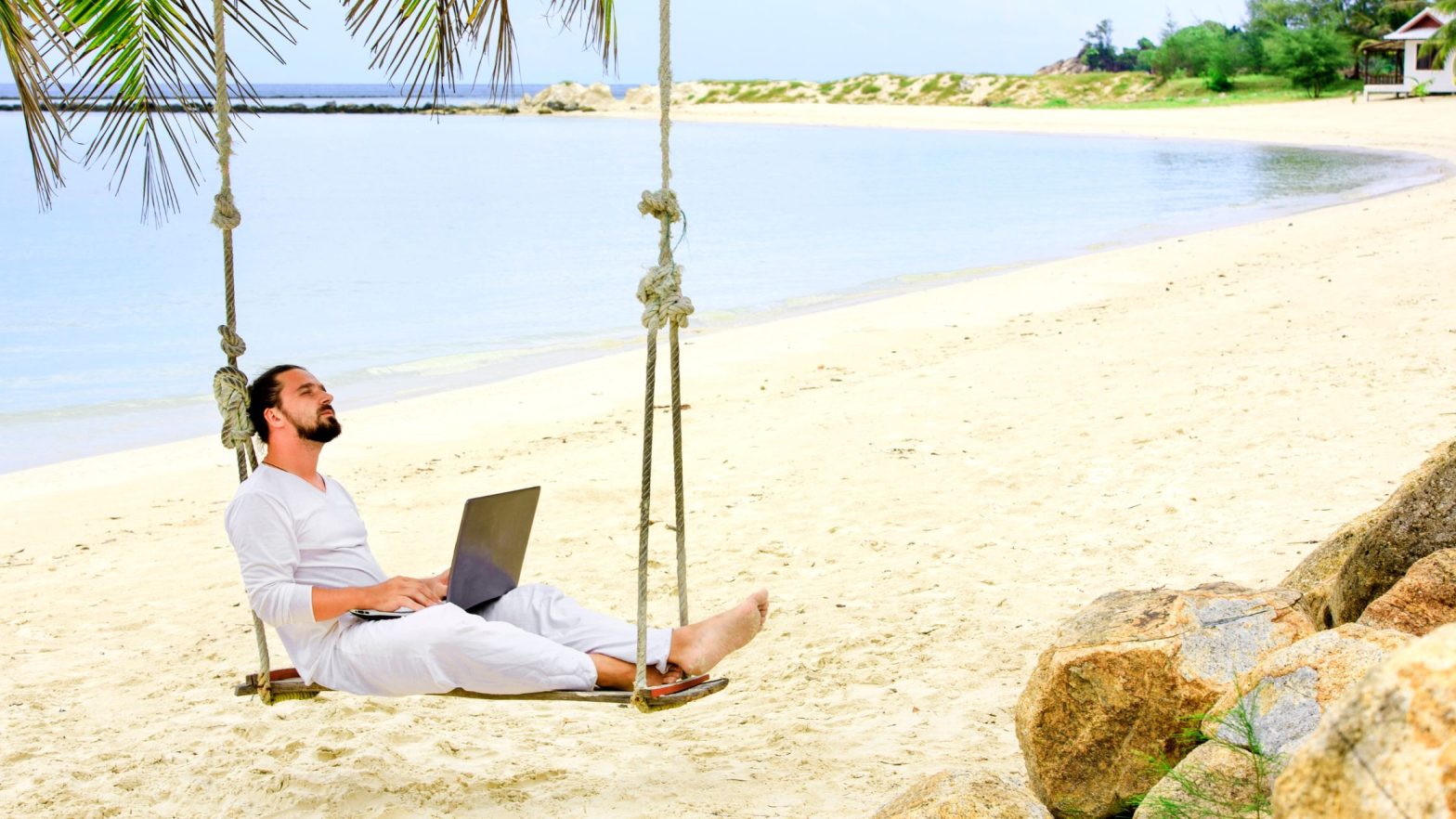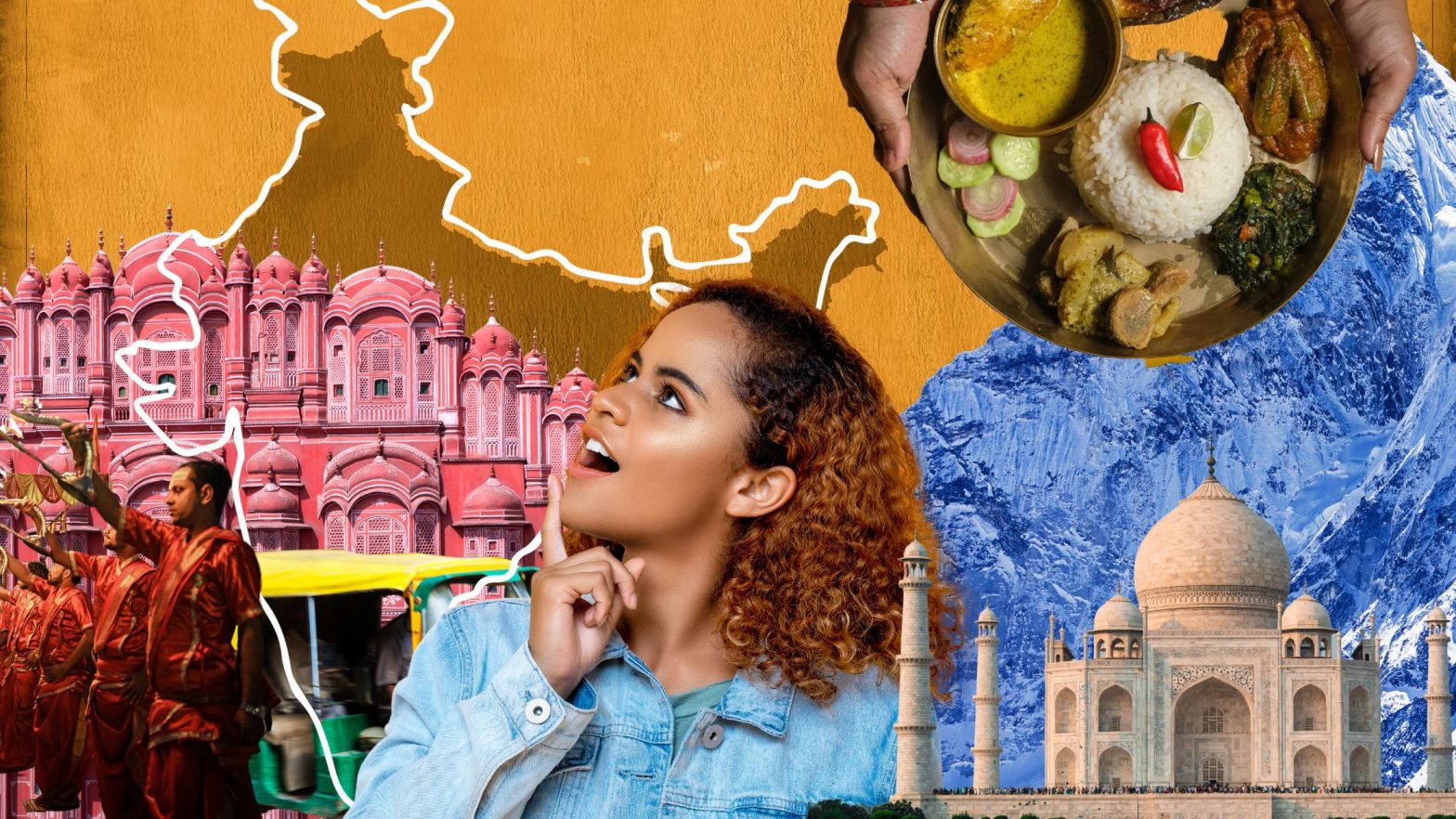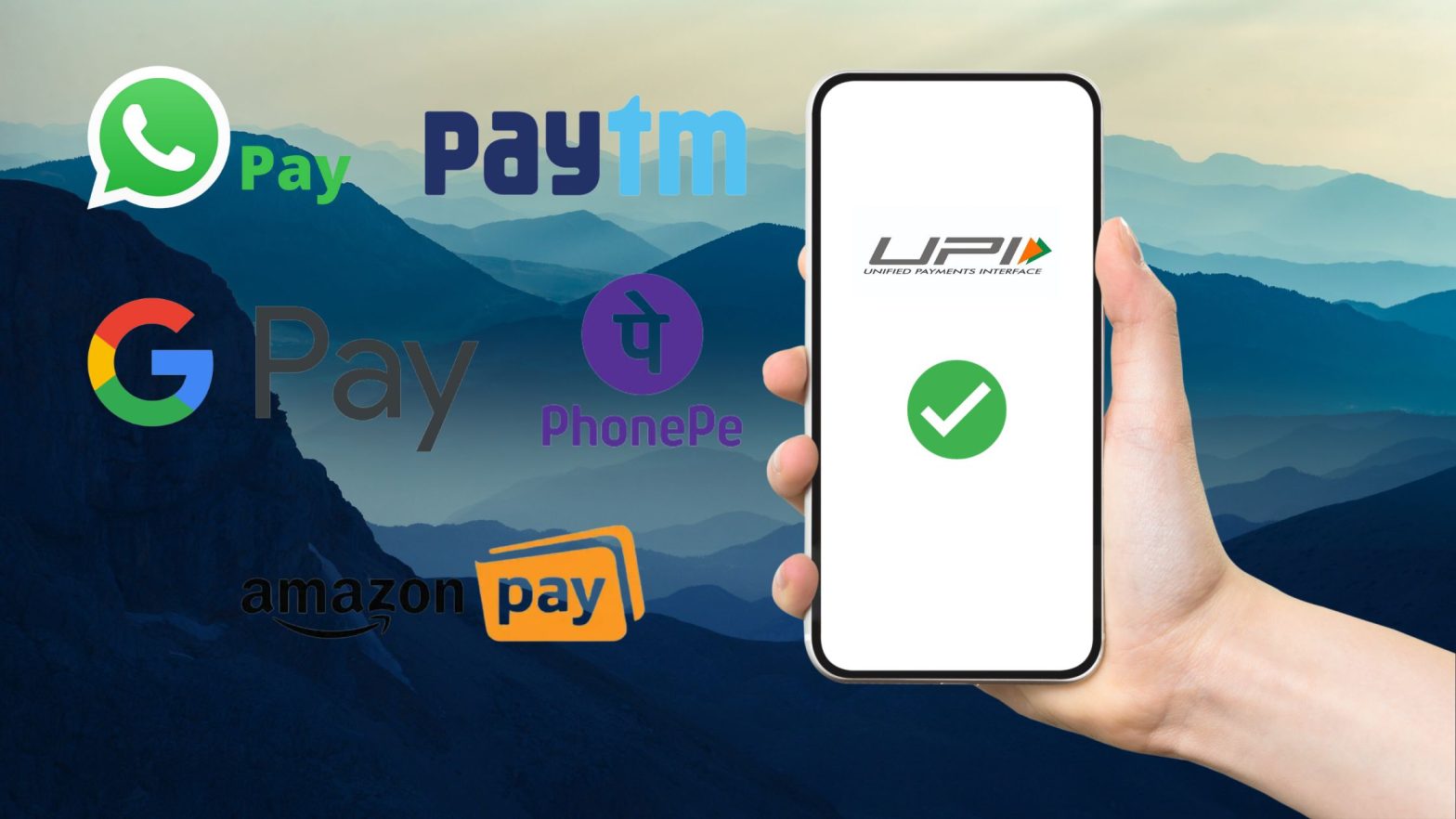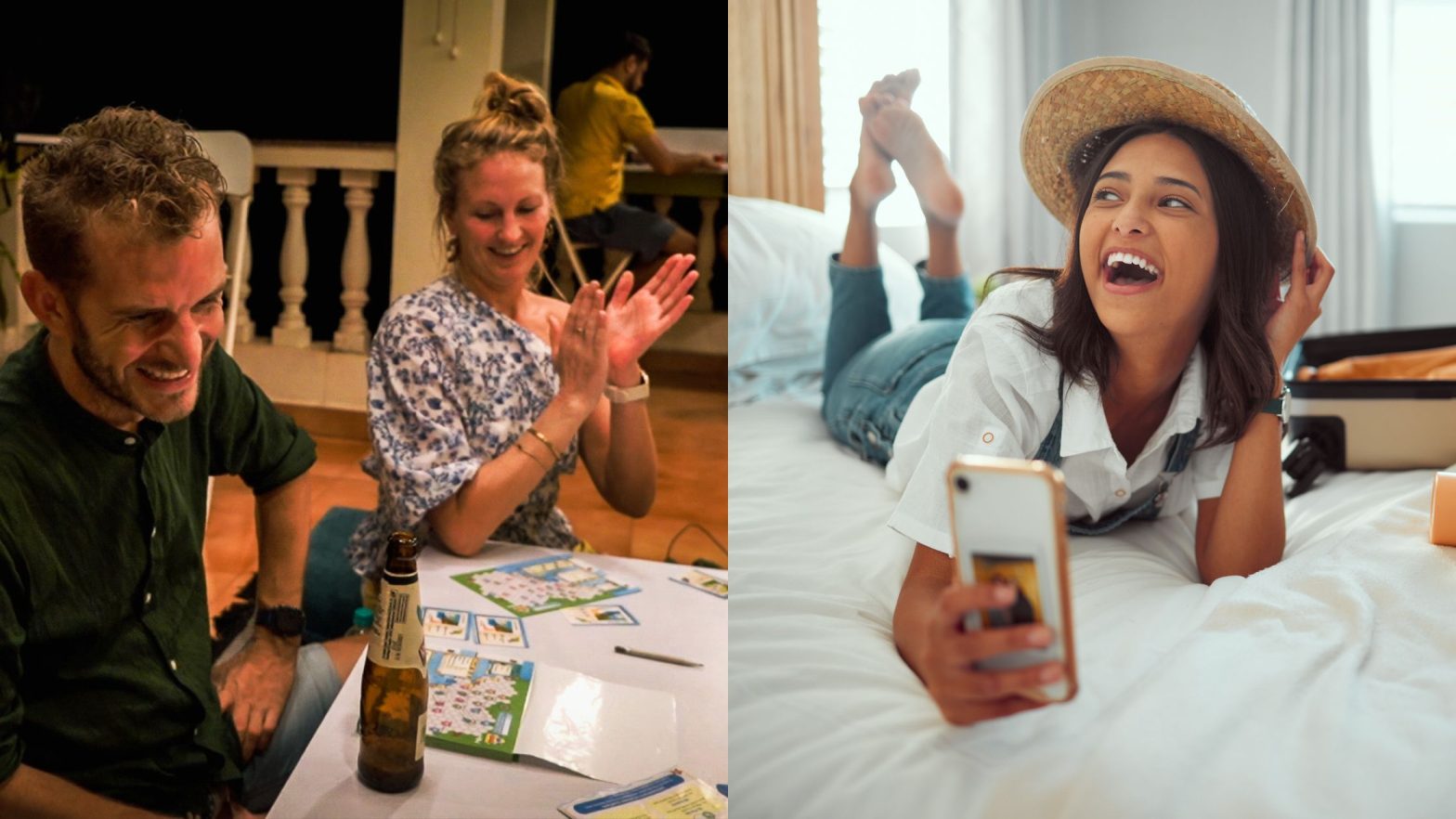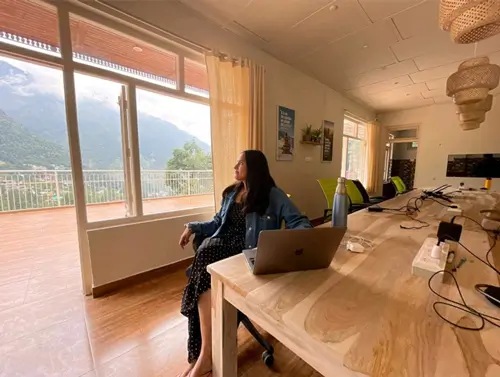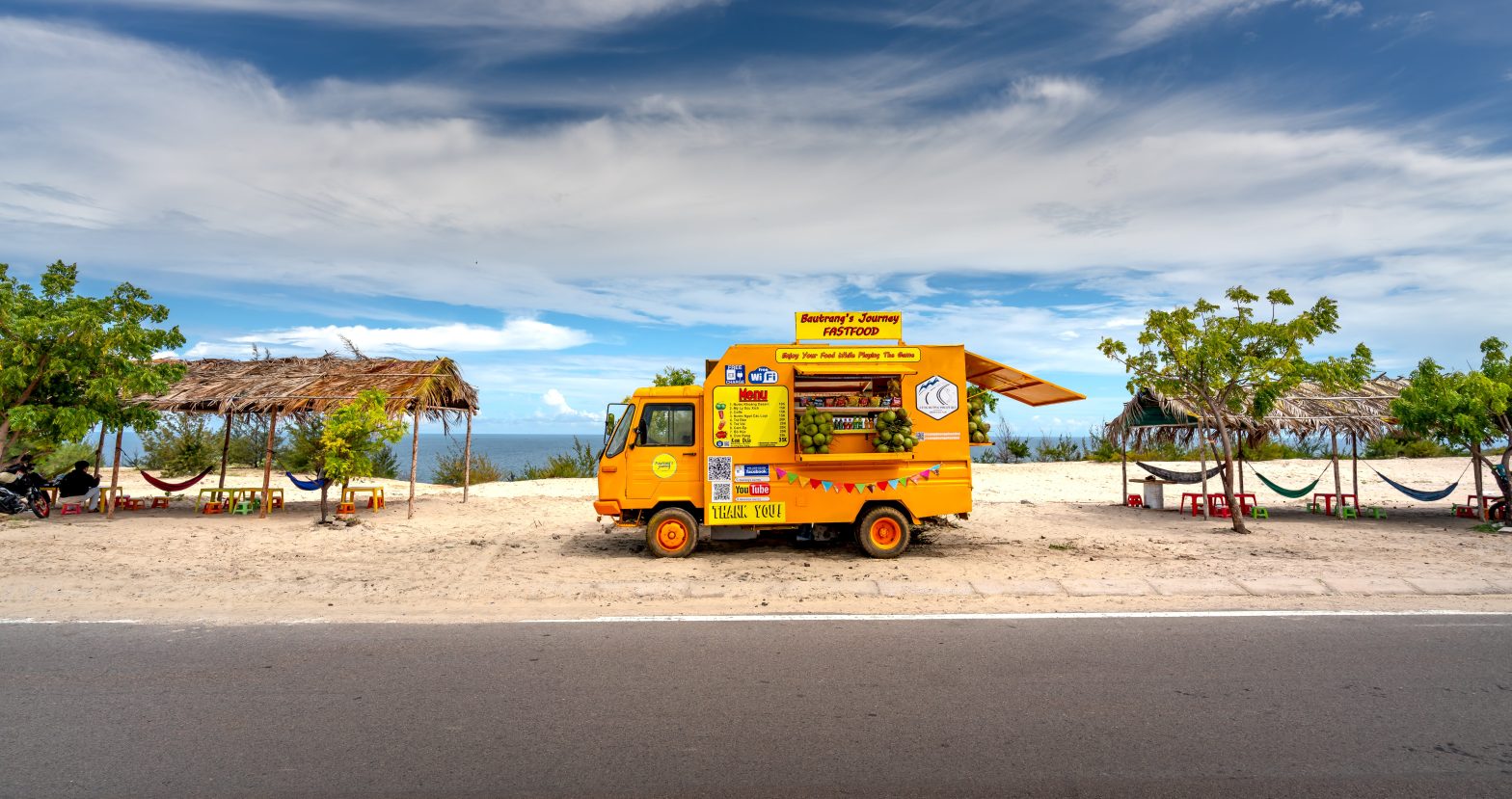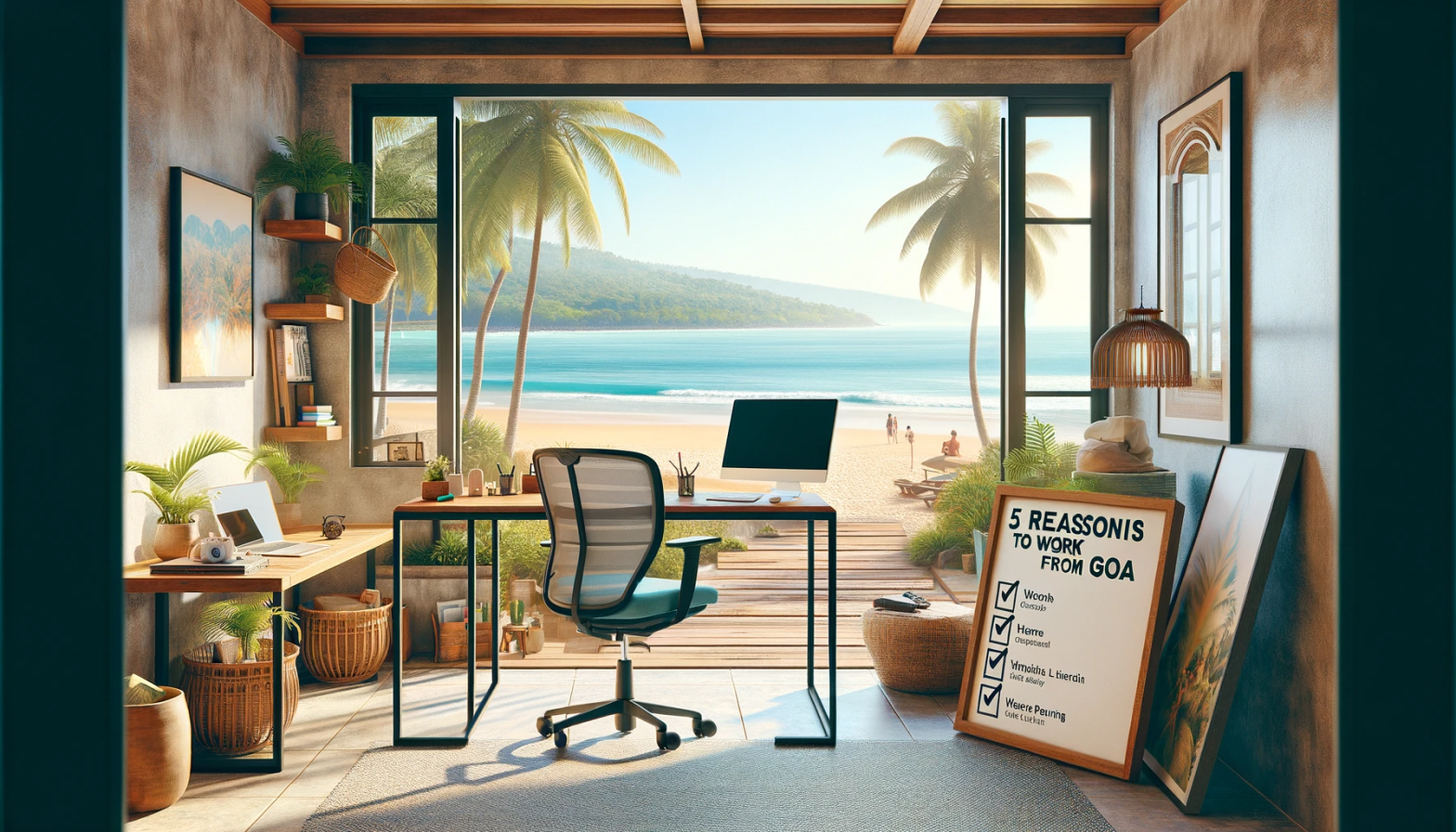Meet Jay – a digital nomad in fintech who’s been enjoying his best life in Goa for the past year. Starting from his early 20s he left Canada to explore the world and experience as much of it as he could. We spoke to Jay about his adventures as a digital nomad, his professional journey, and everything in between.
Table of Contents
Finding a Home in Goa
Jay says that Goa is his new home for a while. He loves being in India and it’s one of his top places to settle. As an Indian where many dream of moving to the West, I had to ask him,
“What made you want to come to Goa?”
“While I’ve been a frequent visitor to India, I avoided Goa for many years due to some inaccurate negative preconceived notions. After the pandemic I thought I’d finally give it a try and was pleasantly surprised.
Goa has a reputation as a rowdy party place, but there is this whole other side of Goa that focuses on healthy living. The fitness scene includes kickboxing, calisthenics, yoga, surfing, rock climbing, and Latin dancing. Many beaches are also really nice to walk or jog on.
Goa is a nice mix of nature and village vibes while still having most of the modern comforts, tons of introvert-friendly non-party activities, and amazing food options! People associate Goa mostly with seafood, but there are also tons of delicious and unique vegetarian options from all over the world. And many of the restaurants here are just as good if not better than what you’ll find in large Indian cities.
Unfortunately some areas of Goa have definitely been ruined by cheap over-tourism (like Baga), but there are still a few good neighbourhoods where you can live a healthy and peaceful life and the government is making efforts to attract a more upscale crowd.
It’s also great that Goa is part of India and the diversity of geography, people, and cuisine that comes with that. You can never be bored here. Indian cities are a mix of modern and high tech while still preserving hundreds and thousands of years of history. The health care is better than Canada, the payments and the banking system is decades ahead of what I experienced in many western countries, and ecommerce is super fast and easy. My only complaint is that walkability and public transit has been neglected in urban planning. There’s too much focus on car infrastructure which is just not scalable.”
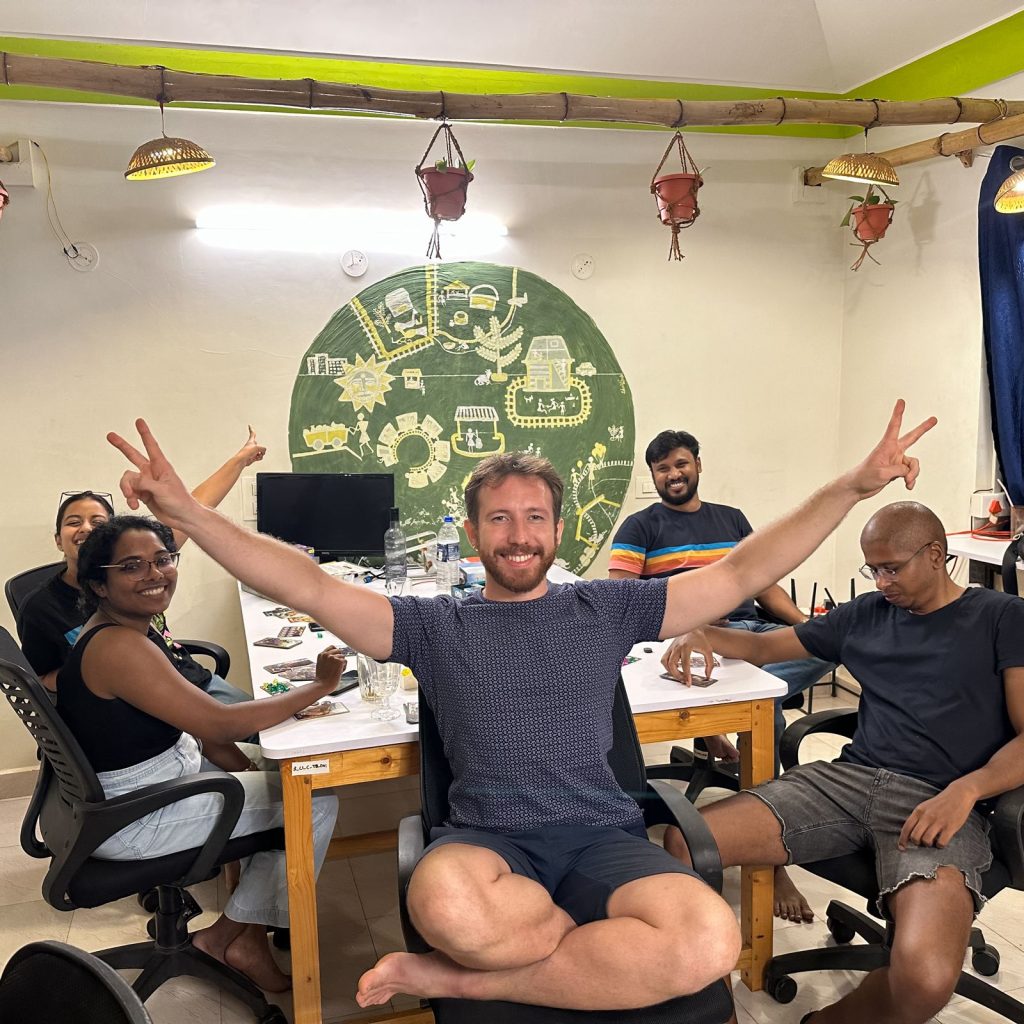
“What advice would you give someone who wants to move to Goa? Is there anything you had trouble with the first time?”
“To get the most out of Goa you’ll need to join some of the many whatsapp groups. Life revolves around whatsapp groups here. Almost every subculture and hobby will have a dedicated whatsapp group. The ‘Party Hunt’ app is also helpful in finding events at the beginning (it’s not just for parties).
Having your own ride (i.e. a scooter or motorbike) is a must. If you can’t drive then take lessons before coming. Because if you can’t drive then you’ll struggle a lot in Goa as most areas are not pedestrian-friendly and the public transit is not well documented anywhere (good luck finding the bus routes and timings). That just leaves taxis which are difficult and expensive to deal with. The state doesn’t allow Uber/Ola and few drivers use the official GoaMiles app. And even if you make taxi contacts/friends, they can face issues from other taxi drivers if they are picking you up from someone else’s territory.
But please avoid renting or buying a car unless you have a family. Many roads here aren’t wide enough (which is also part of Goa’s charm in my opinion), so in a car you’ll end up causing traffic as well as spending more time being stuck in traffic while everyone in scooters drives around you.
My biggest wish is to see a ferry system for pedestrians that connects all the major beaches and surrounding neighbourhoods, along with improved walkability.
Apart from that, I like that Goa is a mix of east and west, and doesn’t have as much of a language barrier. Most people speak English, though understanding a bit of Hindi or the local language (Konkani) can help in getting things done.
Lastly, getting documentation and banking in India can be slow and difficult at first, but once you have it done, life becomes much easier. If you’re serious about living in India, start by applying for a PAN card. You can have it ordered online and delivered to you almost anywhere in the world before you even set foot in the country.”
The Journey of a Globetrotter

Jay’s been working remotely for more than 5 years now. He’s travelled as a student, as a remote worker, and as a nomad on a sabbatical.
“I’ve been to 30 countries across Europe, Asia, Africa, and the Americas. Every continent except Australia and Antarctica.
In some places travel and remote work are not really compatible. Like when I was on a journey with Semester At Sea on a ship, the GPS-based internet was not very usable. For 10MB, we had to pay $20. So you download like an image or two, and that’s your whole bandwidth gone. Hopefully, Starlink will significantly improve on that and make more places accessible.”
Jay also volunteered through WWOOF (Worldwide Opportunities on Organic Farms) when he was younger. It’s a platform where people can apply to volunteer on farms across the world.
“Through all of my travel experiences, that was my favourite. You basically join a local family, live with them, eat with them, and work with them. Do it to get a taste of rural life in an area, learn new things, and travel more sustainably.
And in the evenings and weekends you still get time to go to the nearby towns/cities and do the touristy stuff. In Switzerland, I was surprised that even in tiny villages, they had more modern facilities and better roads than we had in Canada. Even small things like their showers, had LED lights that showed the temperature of the water.
I also WWOOF’d on three farms in India (Uttar Pradesh, Punjab, and Puducherry), but got unlucky with the hosts in that they weren’t as involved with volunteers as the hosts in Switzerland. In hindsight there are better hosts I could have gone with in India, so make sure to do your research.”
Challenges as a Digital Nomad
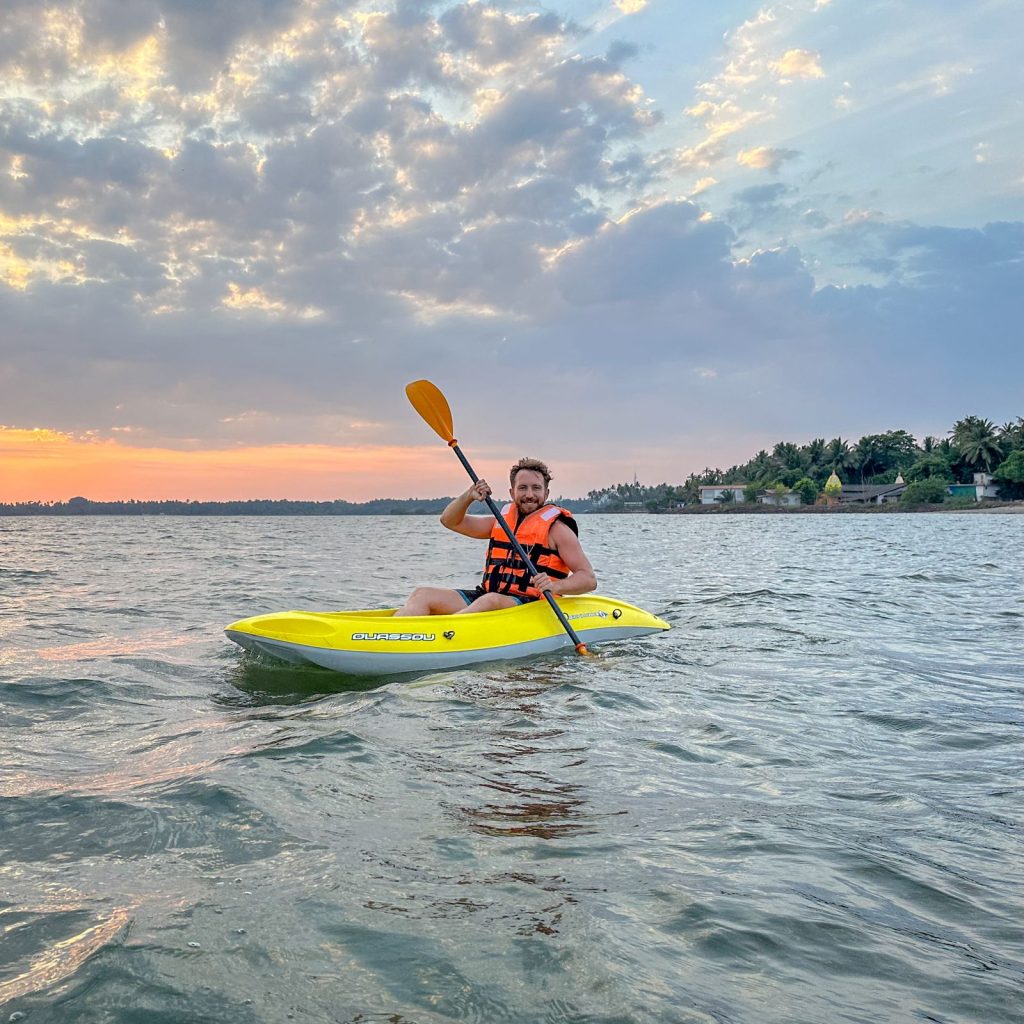
Needless to say, getting good internet access has always been a digital nomad’s biggest challenge amongst others. When I asked Jay what his biggest challenge as a digital nomad was, this is what he had to say:
“When I first moved to Goa, I was worried that the internet would be bad based on everything I heard and read. But it looks like a lot of progress has been made in recent years. Likewise, the 4G and 5G internet networks across India have made it so that I’ve not really had to worry about internet speed.
It’s hard for me to complain about being a digital nomad because the pros far outweigh any cons. When I started my job, I was still studying. I got a really good offer from a US company without having to move to the US. The pay was already better than the expected entry level in my country. I mean, that’s the goal, right? I knew I wanted a remote job because I hated putting on formal clothes, commuting and working in an office. Being a nomad was all I wanted. So it was pretty easy and a dream come true.”
“A lot of digital nomads talk about feeling lonely. Did you experience that?”
“I prefer my social life being separate from my work life, and I’m more of an introvert in general, so remote work and Slack have been a blessing for me. You don’t have people interrupting your flow state for non-urgent things. You can communicate asynchronously instead of having to do a meeting and waste time on formalities to get something basic done.
The only thing that has been a hassle was creating a functional workspace, especially if moving around a lot. I had to get a portable monitor and a few mounts and accessories. But once that was done, it was done. I didn’t have to look at it again. The Internet was good in most parts of the world, even in India.”
“How did you manage work and travel at the same time?”
“I’d travelled a lot before I started working. When I was travelling with my work, it was minimal. By then, I’d gotten the travel bug out of my way and I knew that I wanted to be in India for a long time. So I came back.”
Especially in tech, as a product manager it would be twelve-plus hour days. If you start around 10:00 a.m., you’d be going till 10:00 p.m. or even later. Even if you have breaks in between, you have to be available. I worked with stakeholders from all over the world, which meant I had to be available for multiple time zones. And as the company and my responsibilities grew, I would wake up to 100s of Slack notifications. That was my least favourite part of the job.
So that’s why I recommend to first travel and get a taste of as many places as possible, then shortlist the ones you’d like to stay at longer and focus on your work/career from there.”
“How do you manage your fitness when you're travelling?”
“Initially I didn’t do as much fitness when I travelled. I did sign up for different workshops and all, but didn’t have the usual strict routine. When I’m in a new city, I get most of my exercise by walking as much as I can, and that’s also how I get a good feeling of all the different neighbourhoods.
As for diet, I don’t cook as much in the first couple months of being in a new place. Trying new foods and restaurants and cafes is one of the most fun parts of travelling for me. I make sure to build up a large to-do list of food places to checkout before going to a new city.
And rather than making travel just about jumping from one tourist spot to another, you can make travel centered around a fitness goal. One guy I recently met is travelling to try kickboxing classes in every country. Some people travel to try all the major hiking trails around the world. Some people travel to try all the surfing spots around the world. There are so many fitness niches you can pick and focus on for your travels and this way it allows you to compare countries from a unique angle.”
"Did you have trouble dating while travelling?"
“When I first started travelling, I was more focused on exploring new places than on looking for a relationship.
I’d only start dating when I stayed in a place longer. Now with many people working or earning remotely, it’s easier than ever to continue and build a relationship if you meet someone you like while travelling, or to settle down if you find a person and place you like.
It can get tricky though if one person is a nomad and one person’s not a nomad, but that’s also why you shouldn’t waste time on dating unless you’d be ok staying in that place longer term.”
Jay's Adventures as Digital Nomad in India
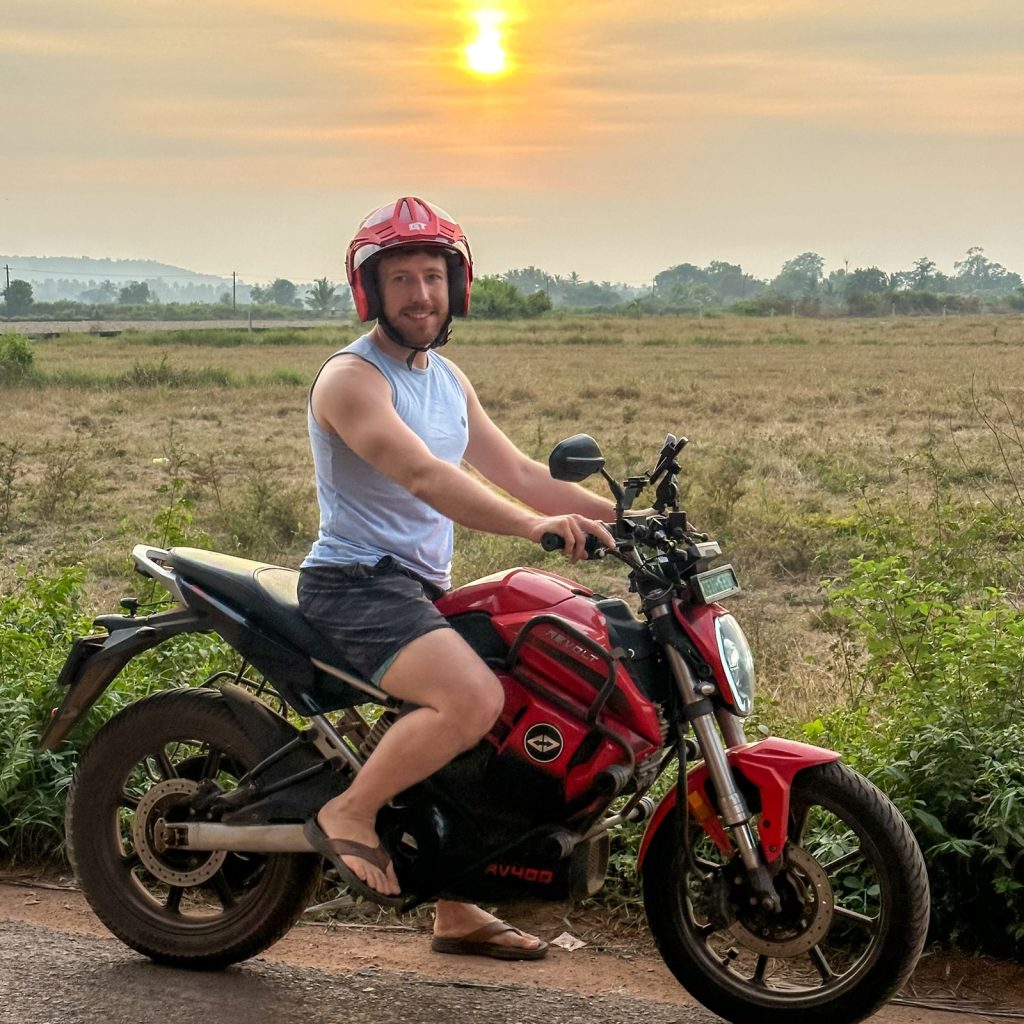
Jay travelled through India a bunch of times. His first visit to India was in 2011 as a microfinance intern, when both he and the country weren’t as technologically advanced as they are today and when most of the country was still unbanked (no Paytm, GPay, UPI, Aadhaar, etc).
“I didn’t have a smartphone – not because they didn’t exist but because I was very low-budget back then. I got one of those older Nokia brick phones with keypads. They were good for calling, sending short texts, and playing that one snake game. In hindsight, I don’t know how I managed to get around without Google Maps. I just had those paper Lonely Planet guidebooks.”
Remote Work - The Good and The Bad
Jay’s currently on a sabbatical, in between figuring out whether he wants to return to a job or start his own business. He’s doing all of his thinking while sipping cortados or matcha lattes on Goa’s beaches. At his previous company, he worked as a Product Manager in Fintech, basically working with all parts of the company and letting engineers and designers know what they need to build.
“How did you manage to travel through these professional transitions?”
“That’s the thing, I didn’t travel much during most of my remote career. I mostly hunkered down and focused on my work and a relationship I had at the time. In 5 years I only switched cities a few times, but this itself is already amazing compared to traditional in-office jobs. If I had an in-office job, I wouldn’t be able to change cities anytime I wanted. They would have had to find a new team and new responsibilities for me. Whereas with a remote job, I could decide to move to a new city anytime, take a few days PTO for the shift, and then continue with my work and team as normal.”
“What advice would you give somebody who wanted to travel and work?”
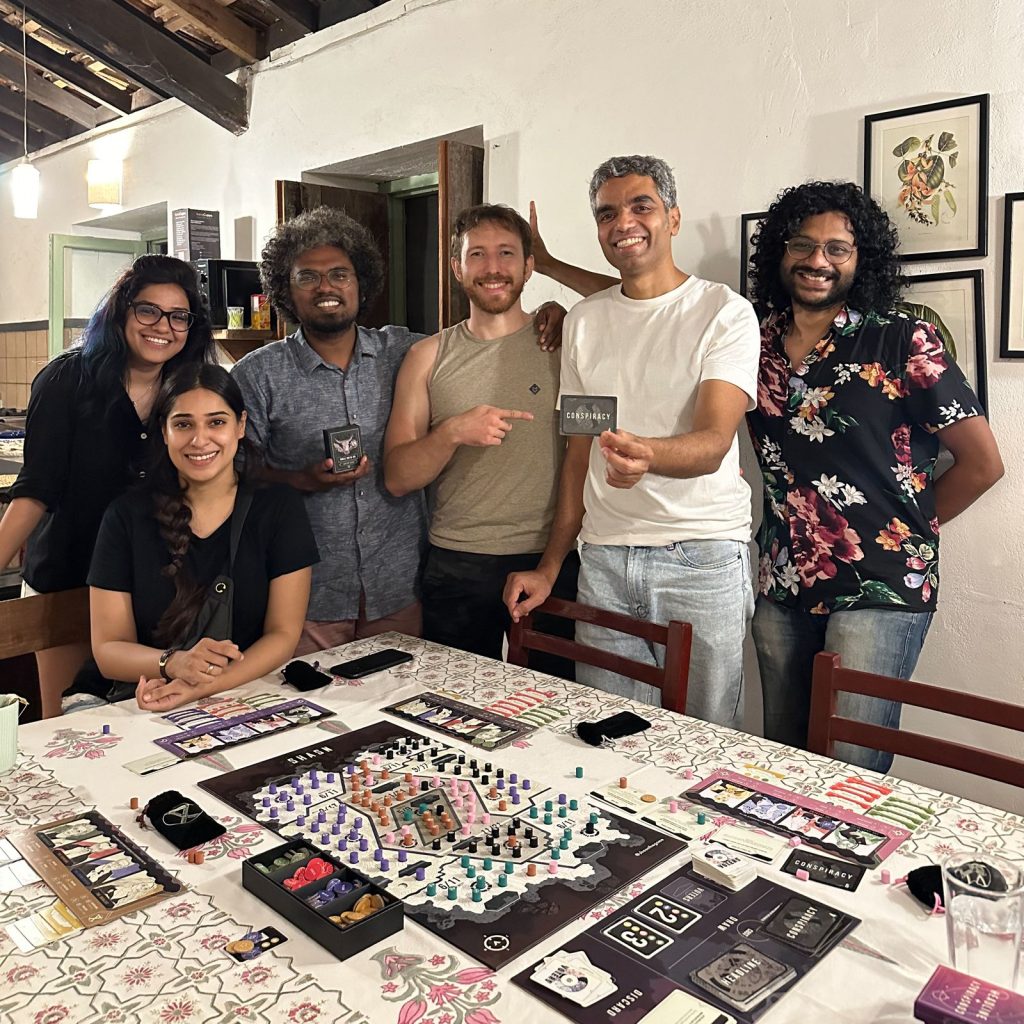
“Either focus on work or focus on travel. When I tried doing both at once it was stressful and exhausting getting into a routine in a new place while trying to deal with all the chaos at work. If you still want to do both, then stay in a place for at least a couple of months because time passes so fast. Also changing cities within the same country is much easier than changing countries. So start with countries that have a wide variety of cities you’d be interested in trying.
Some job roles are definitely easier to juggle and travel with than others. The fewer stakeholders you have to deal with, the easier it is to set work-life boundaries. So in hindsight, I’d probably prefer being a developer, rather than a product manager.
So, what's the takeaway?
Jay’s adventures are a story for the movies. There is so much to learn about the world. While travelling can get tough sometimes, whether or not digital nomadism is your thing will entirely depend on your priorities. If you want it, you’ll find your way to it – whether it’s through a hectic remote job, a freelance opportunity, or your own business. If you are looking to be a digital nomad in India, you should probably start with Goa. There’s a growing community and Jay has some great recommendations up his sleeve to help you out too!
You can follow Jay's adventures on his social media!
